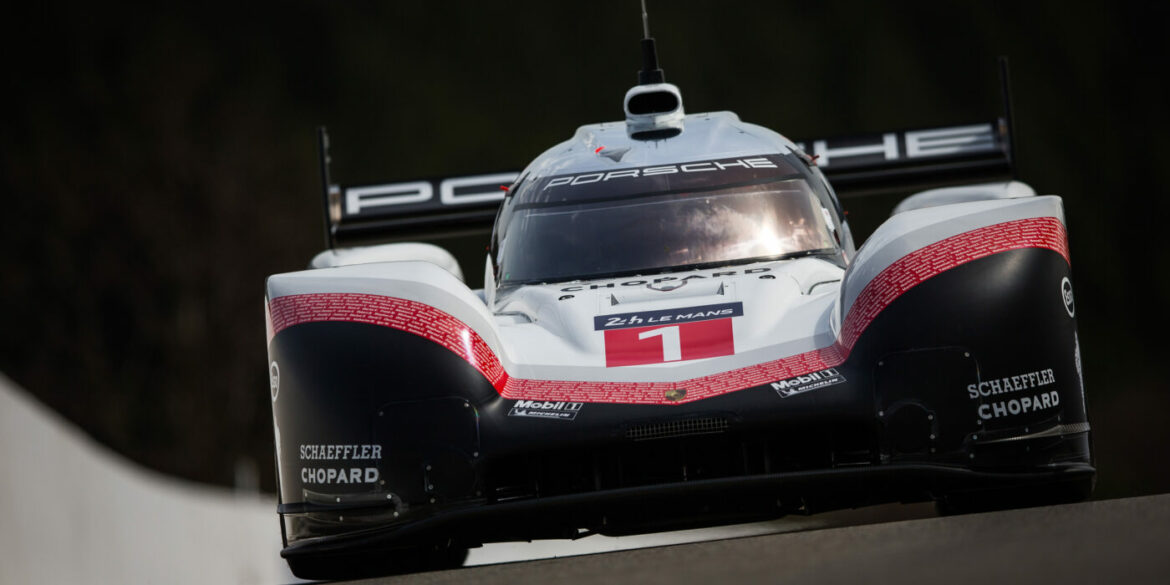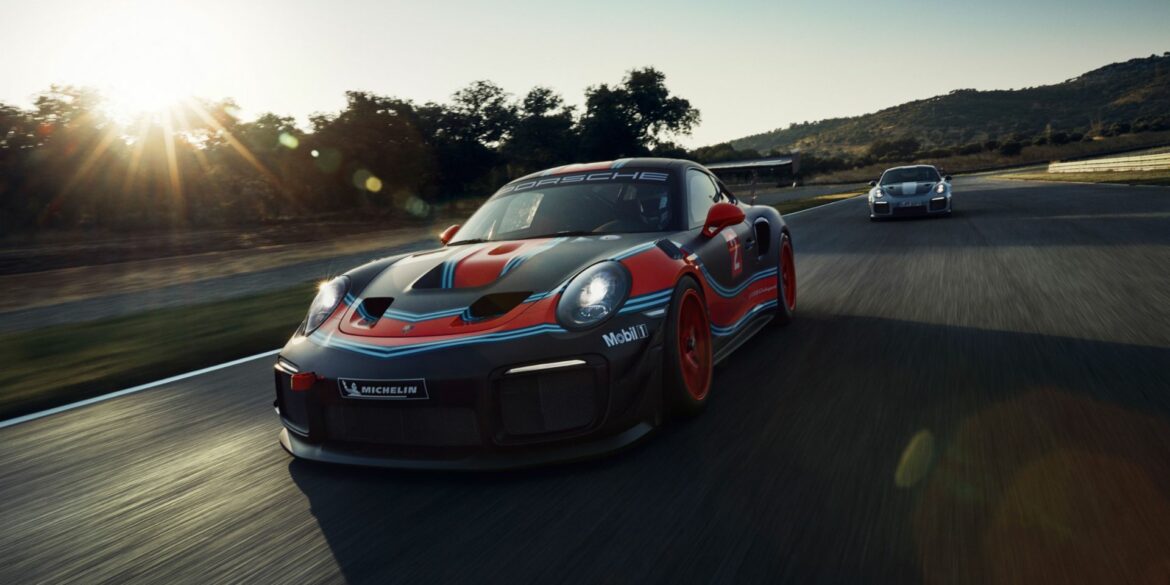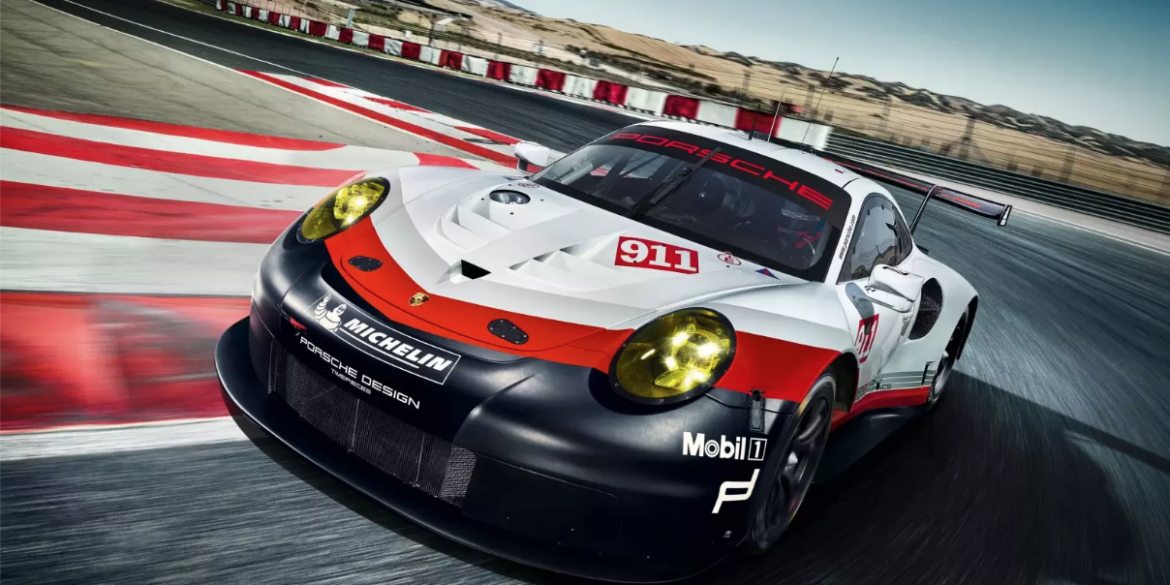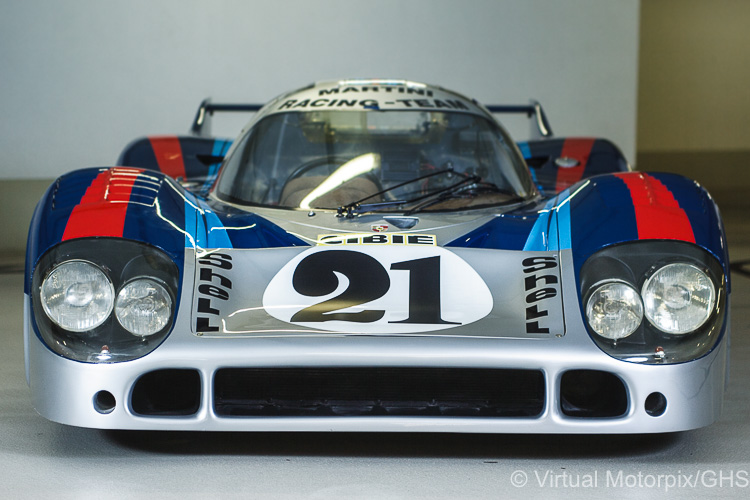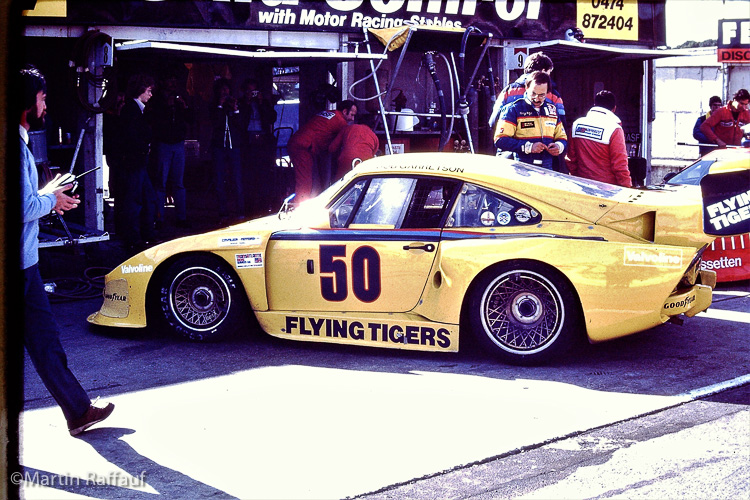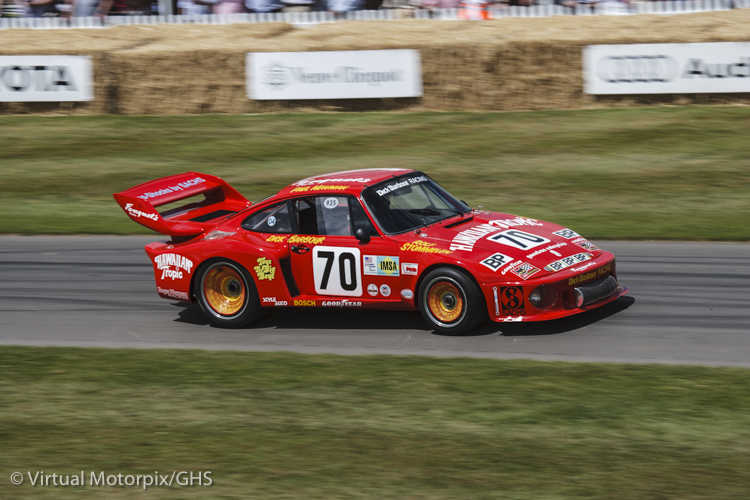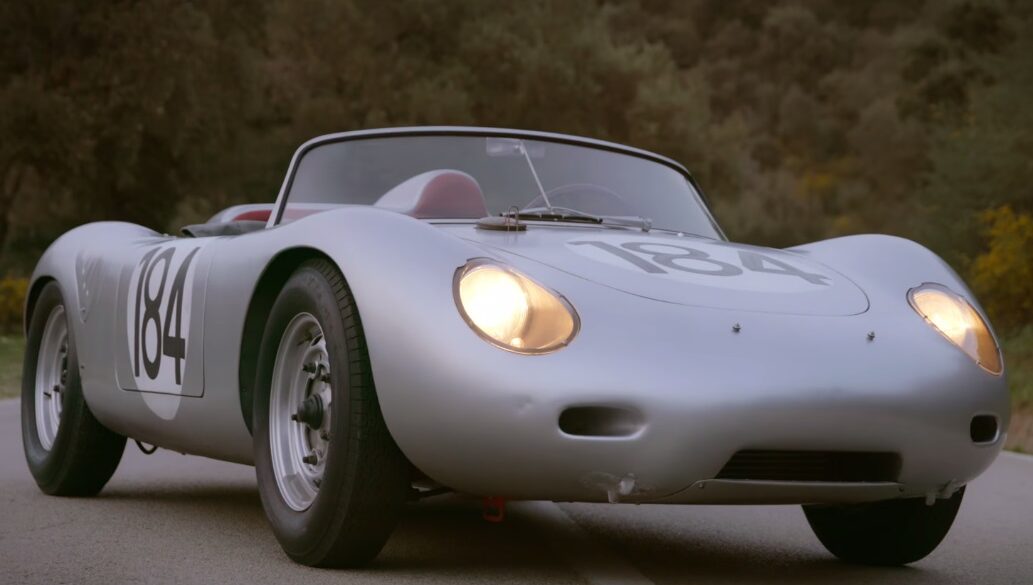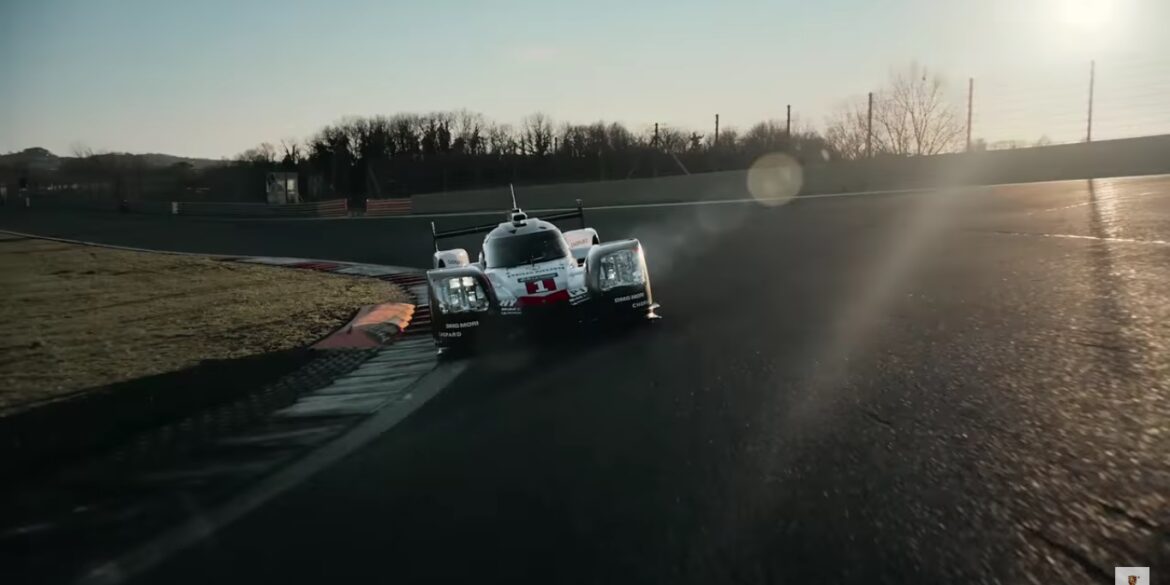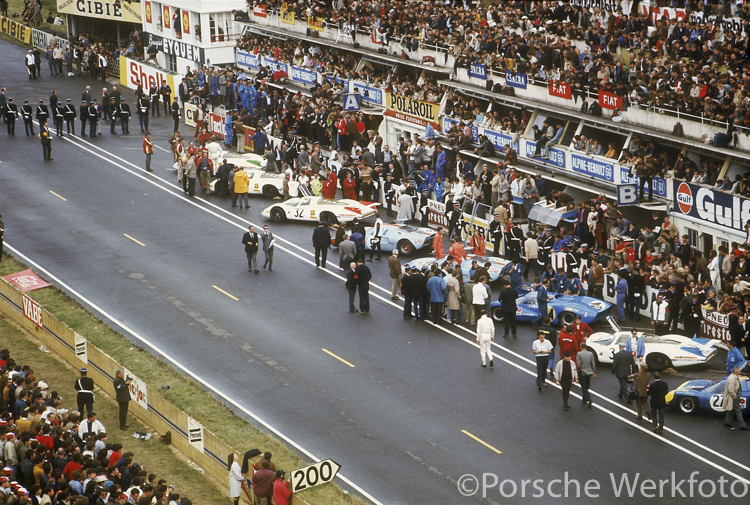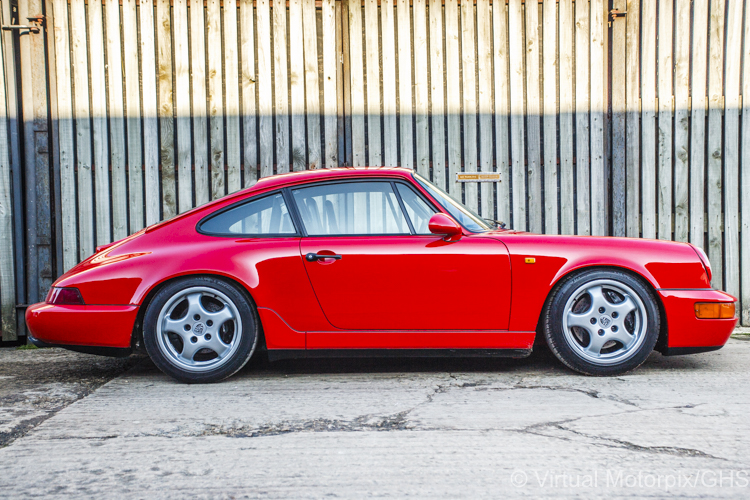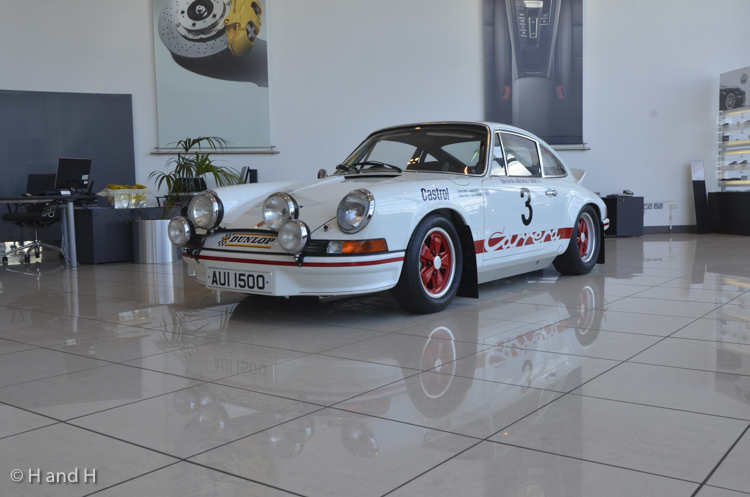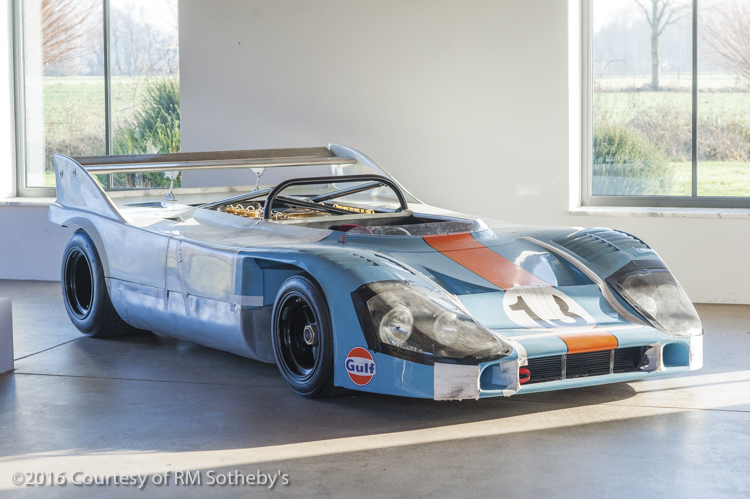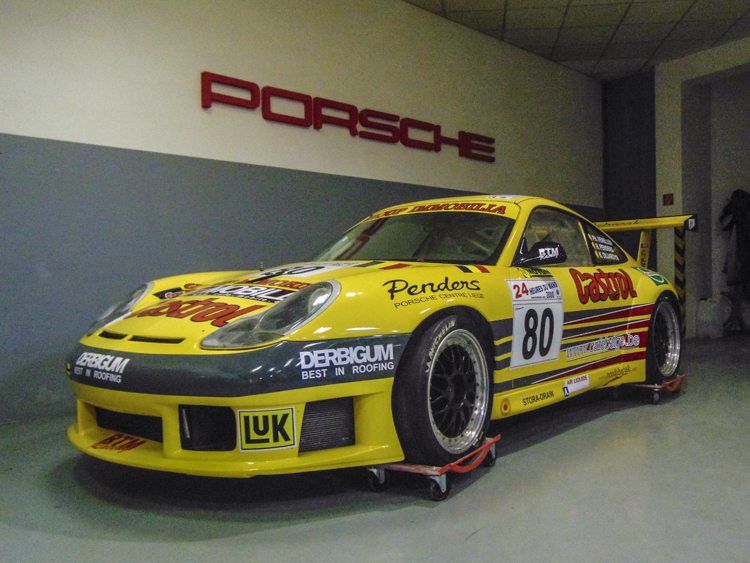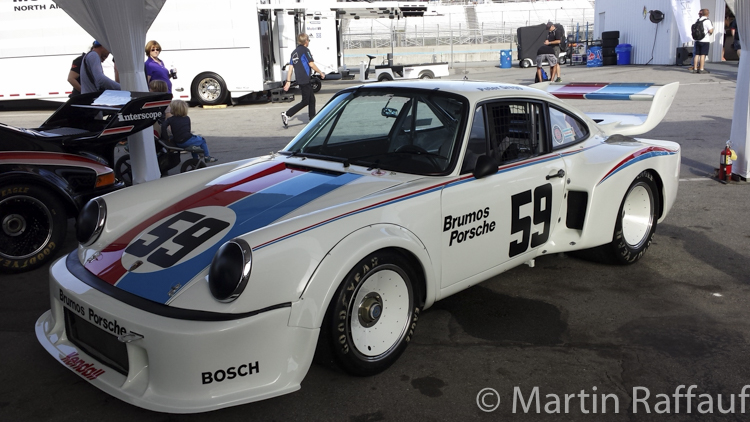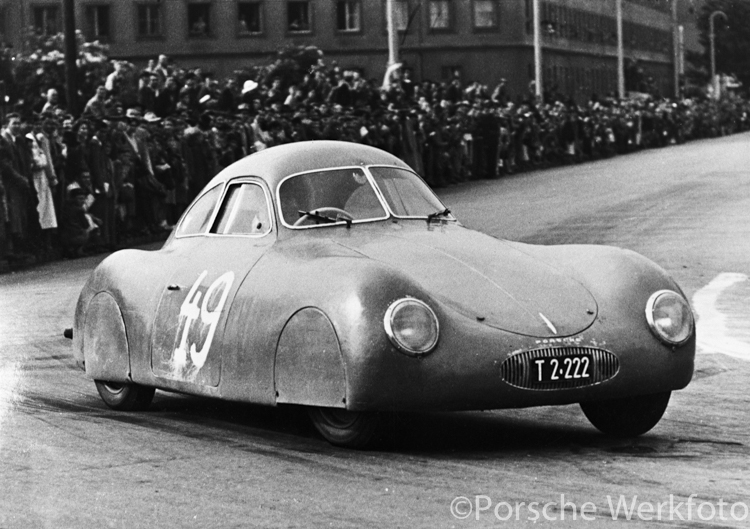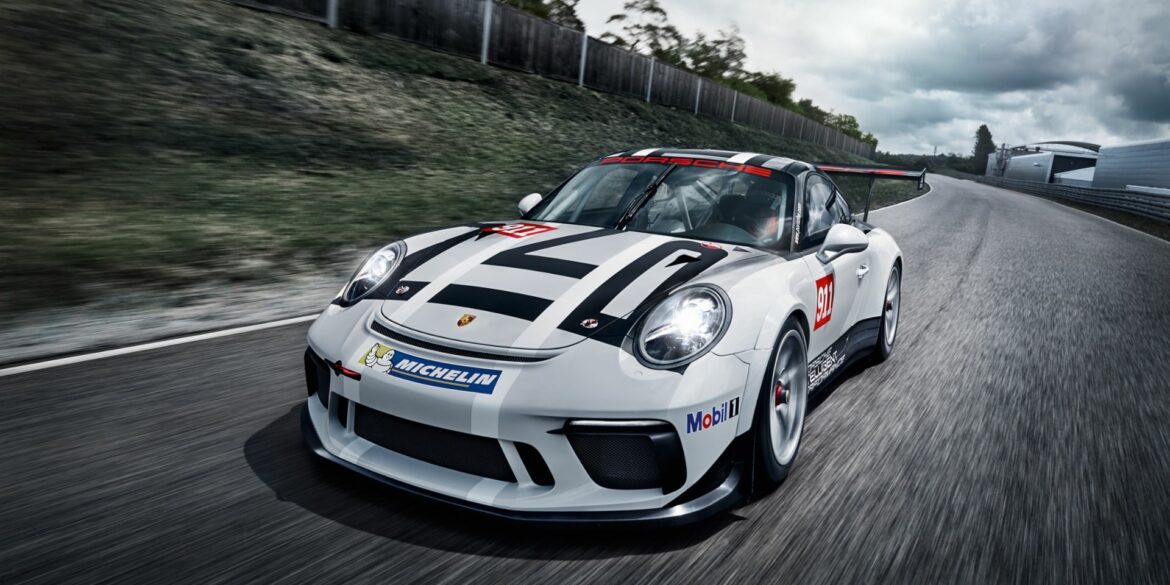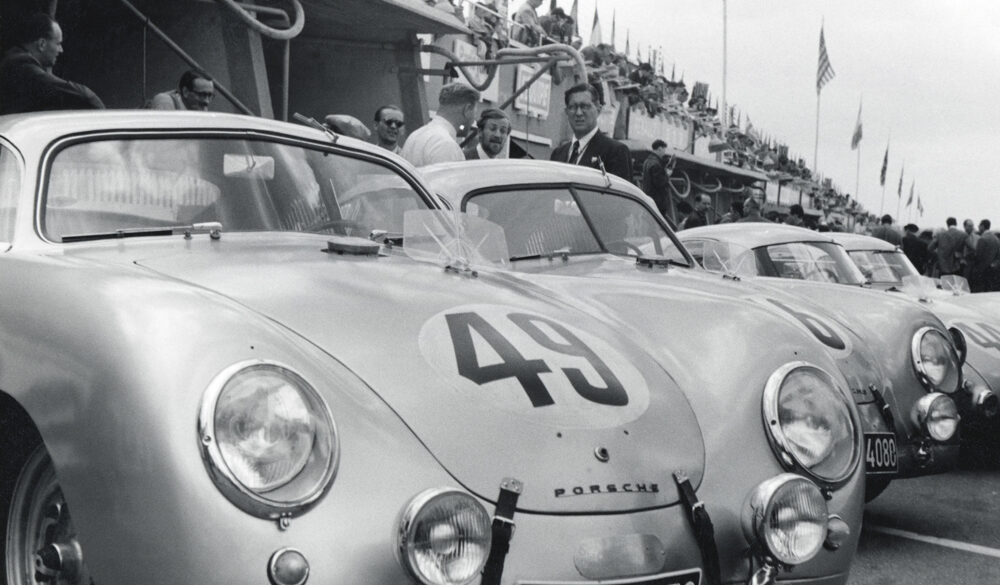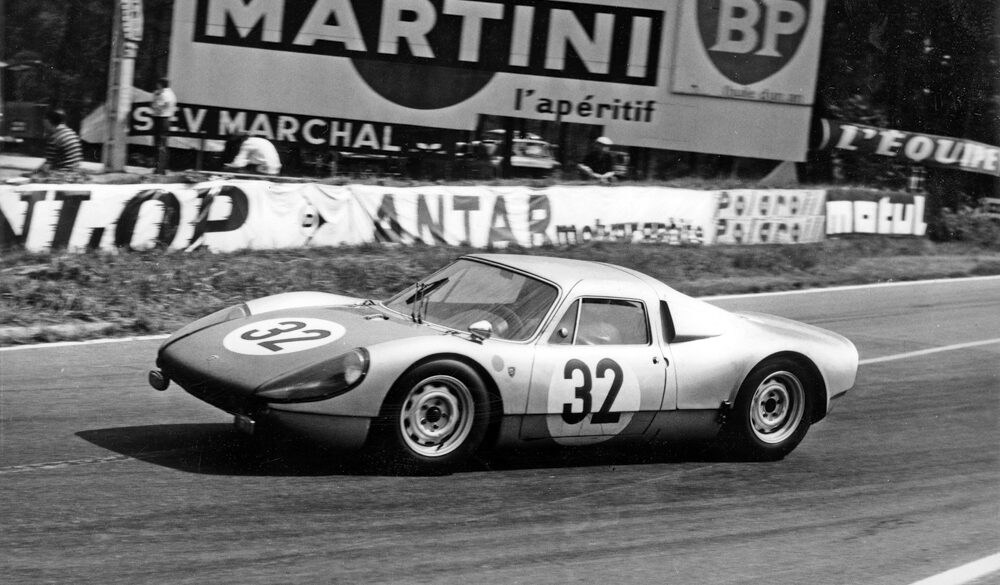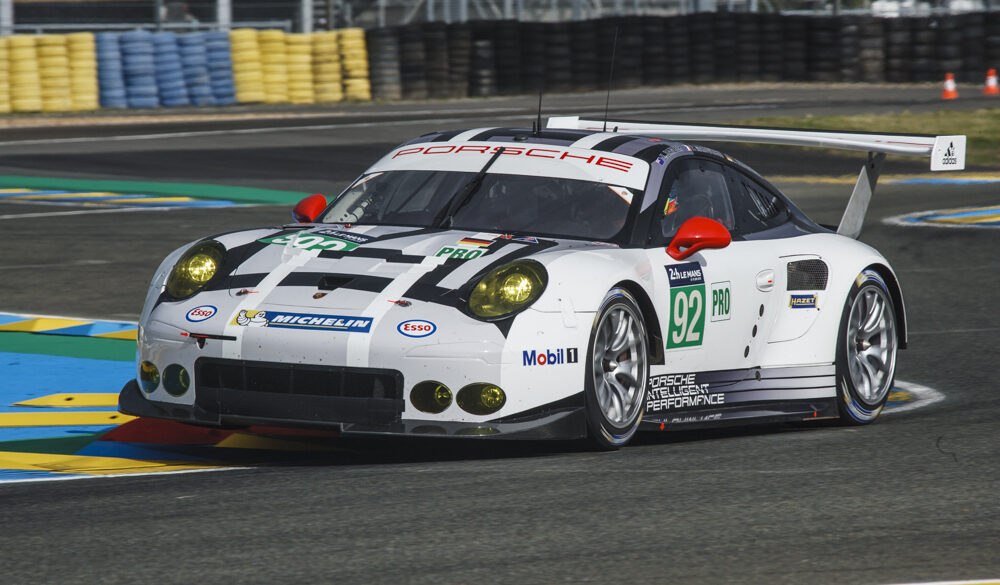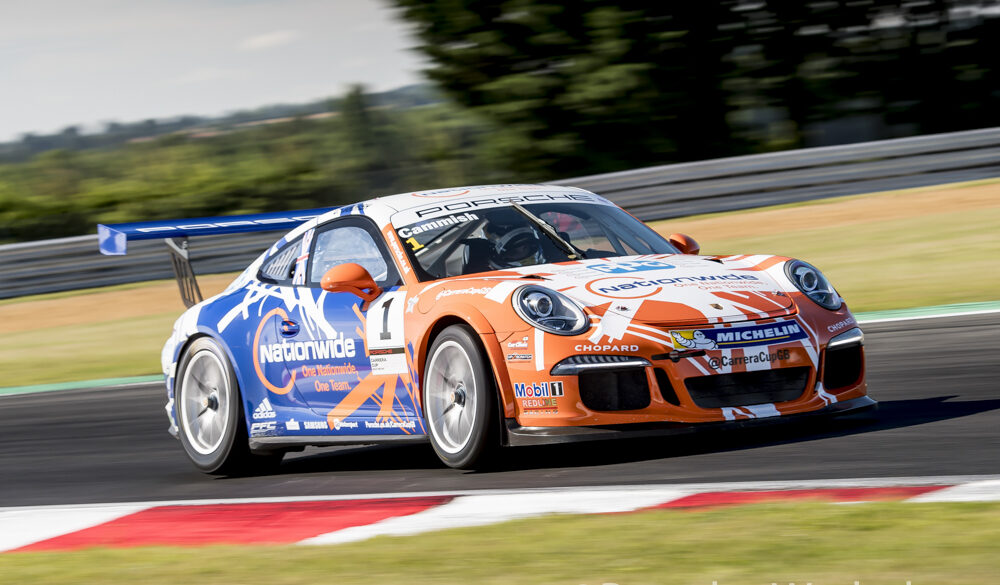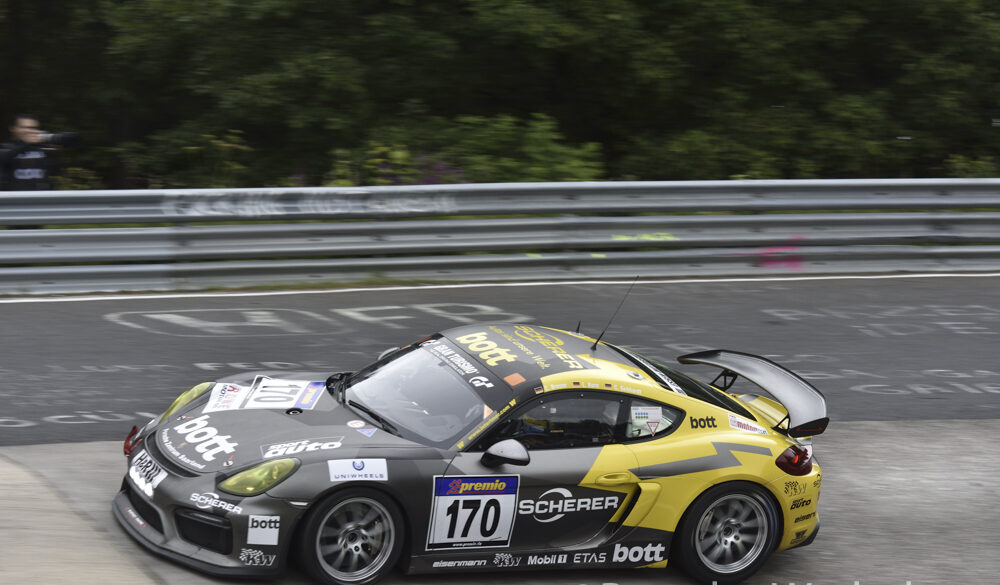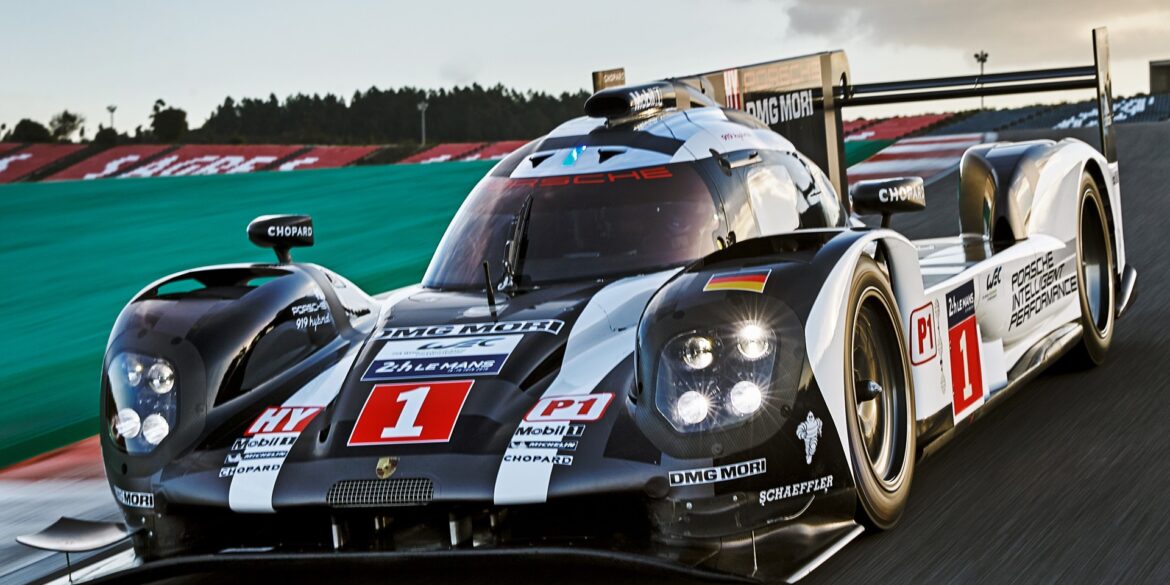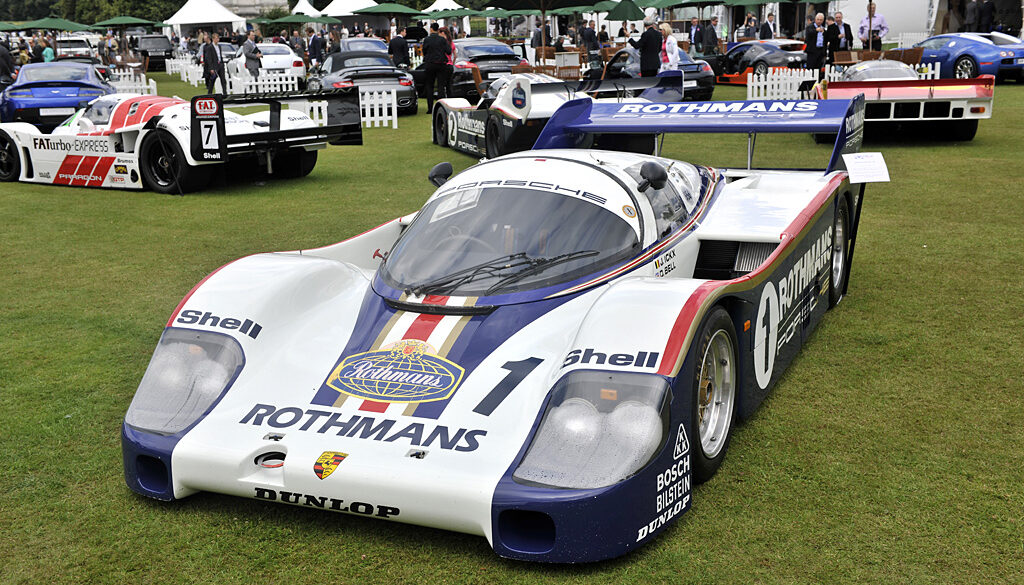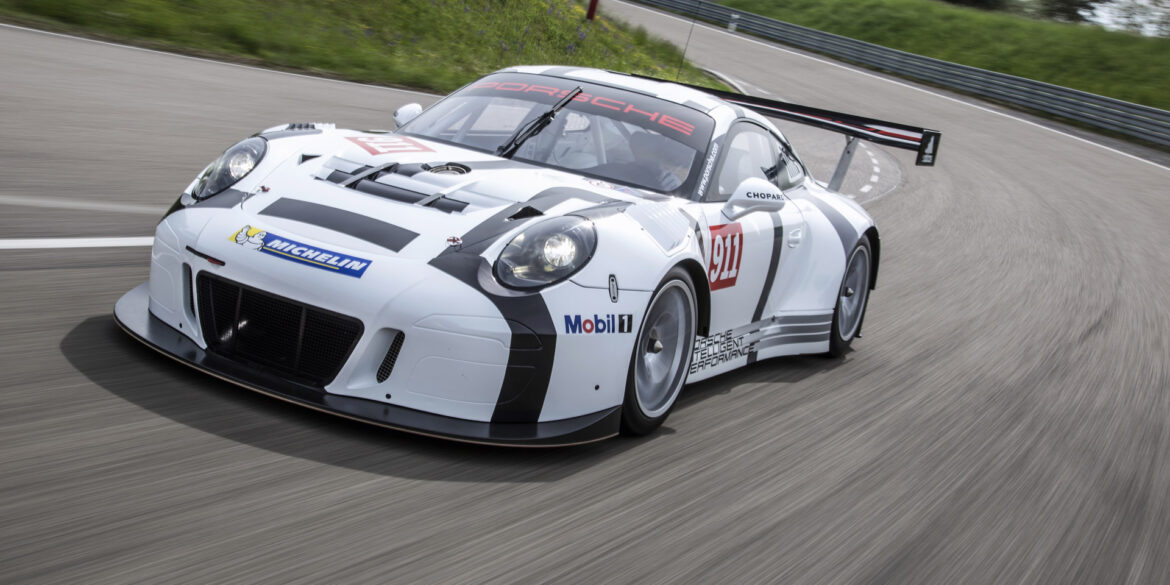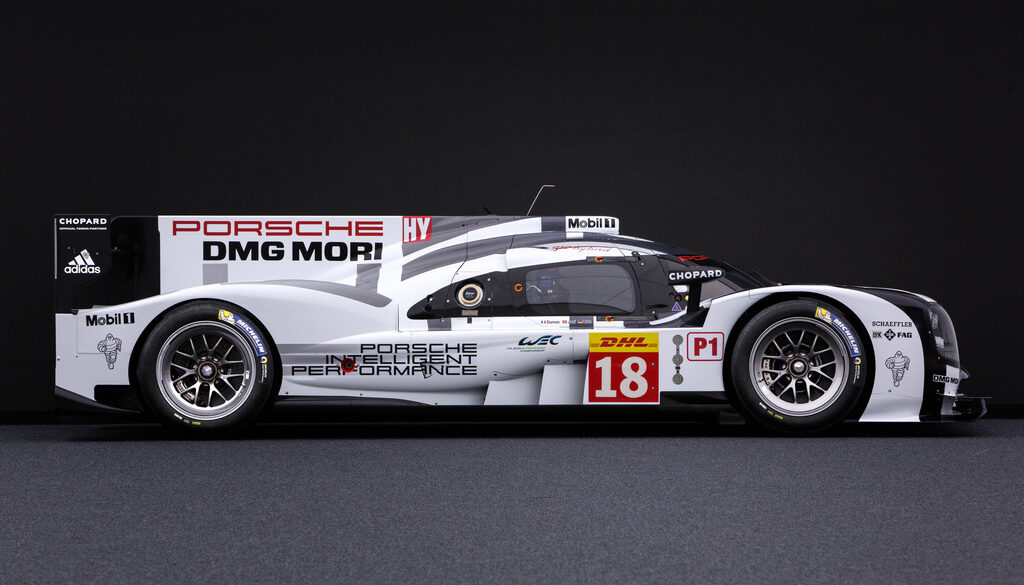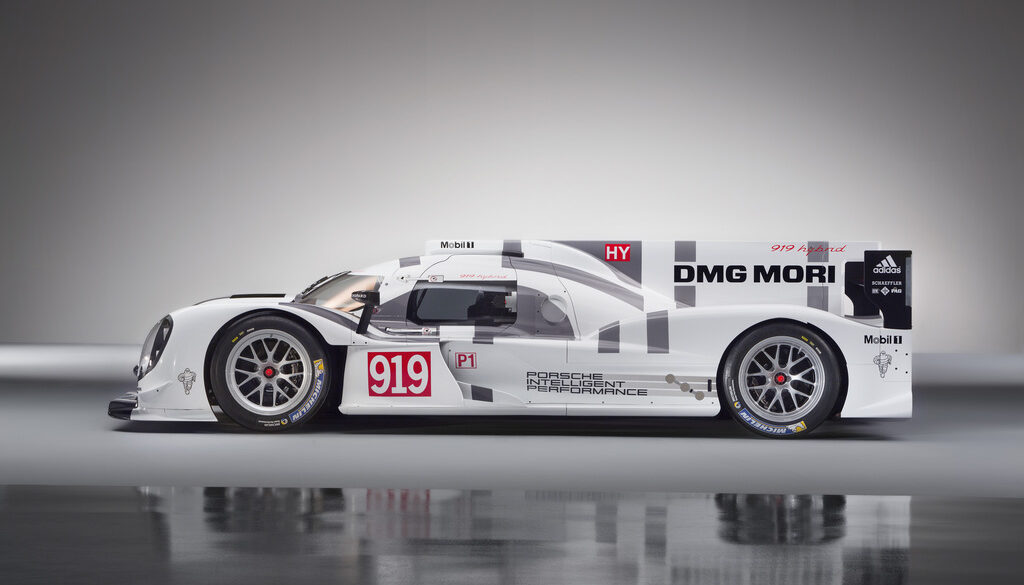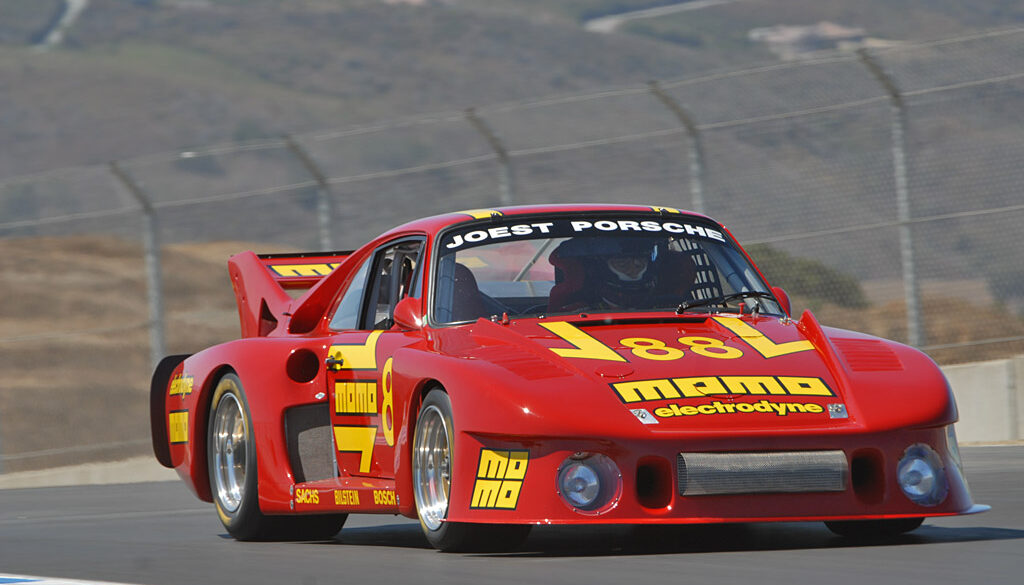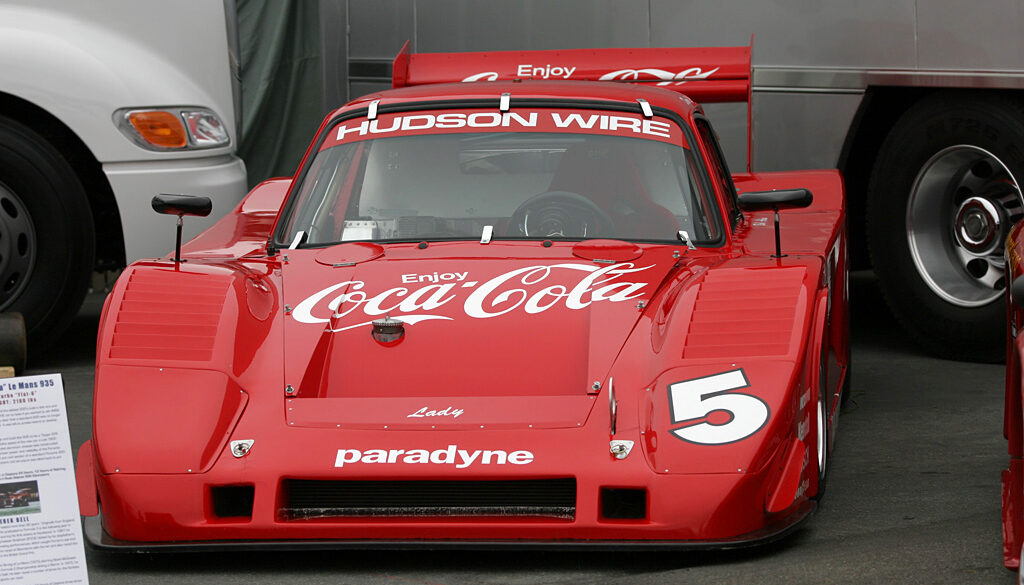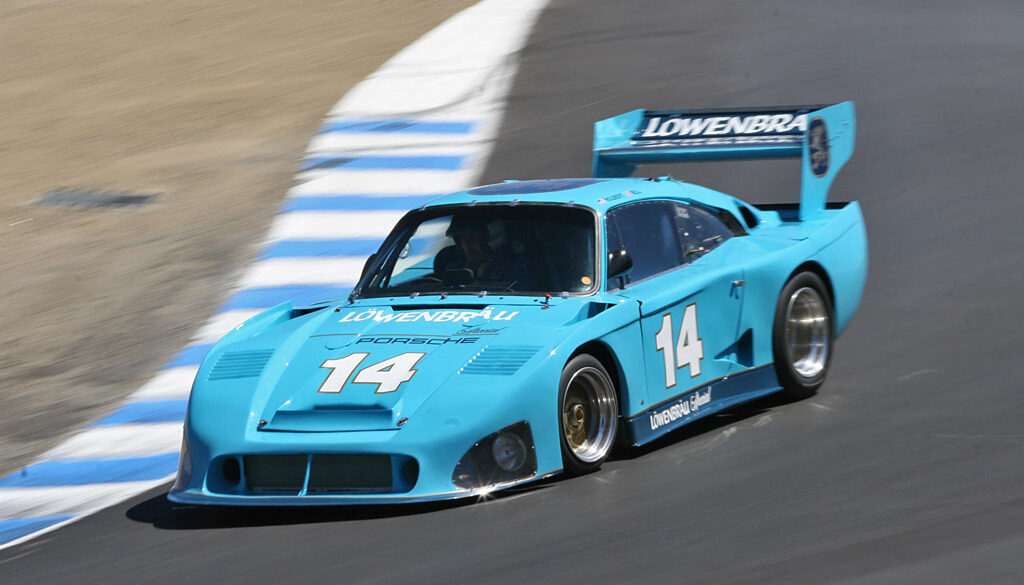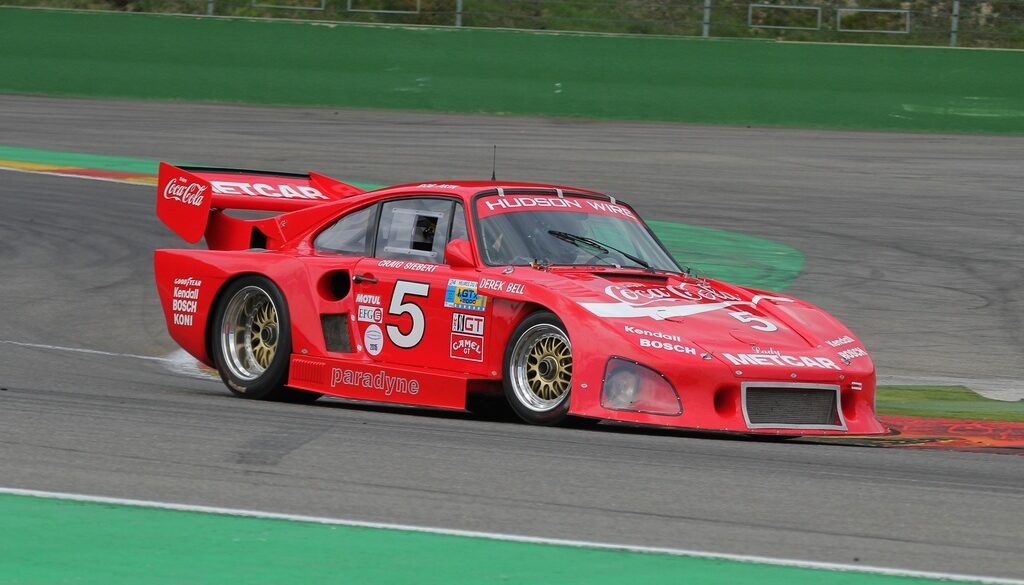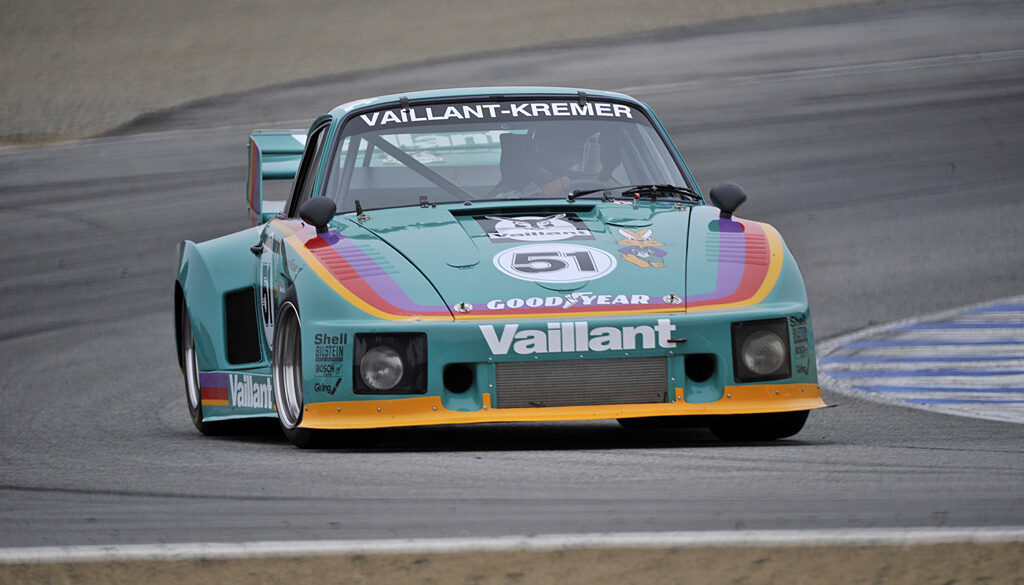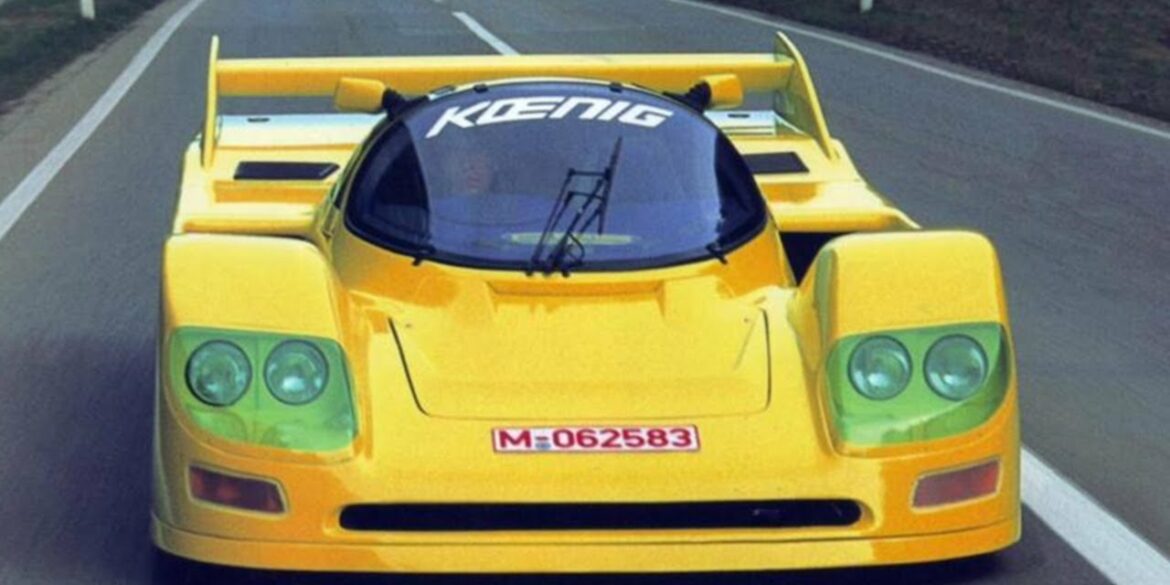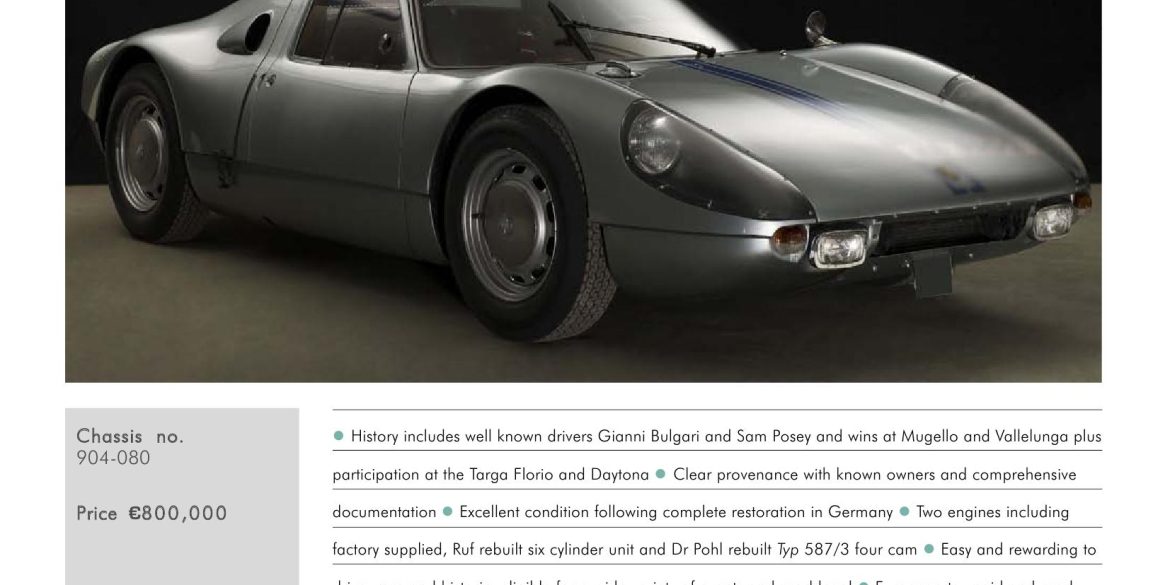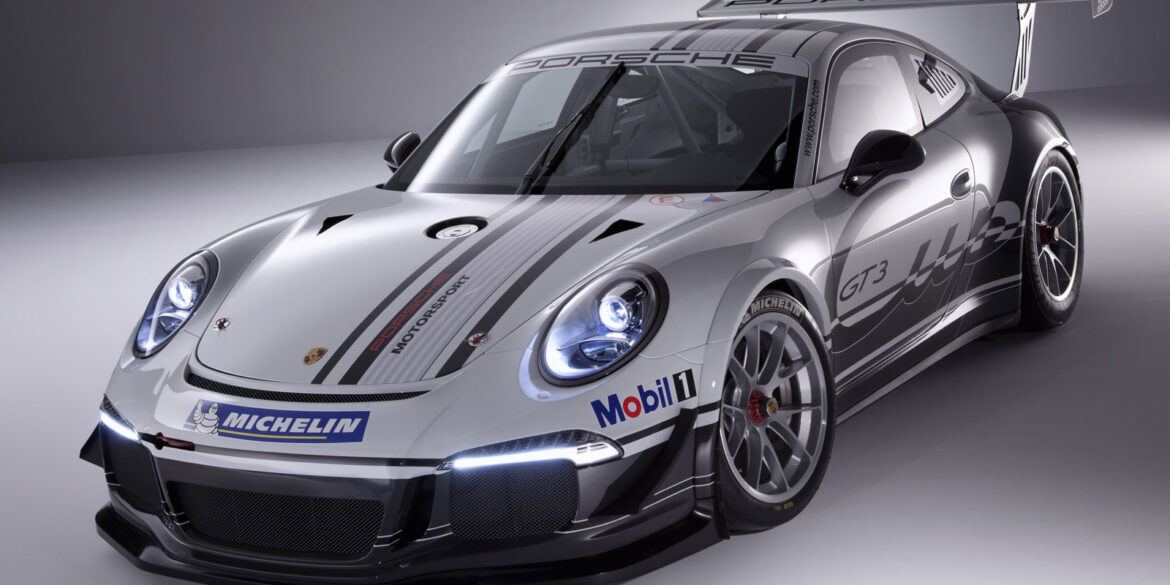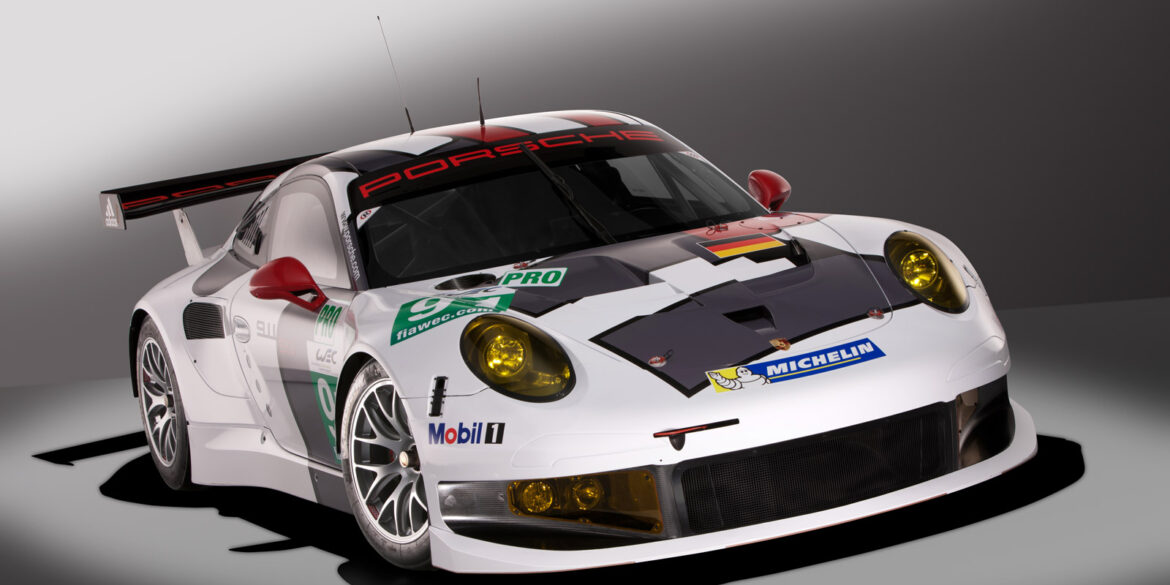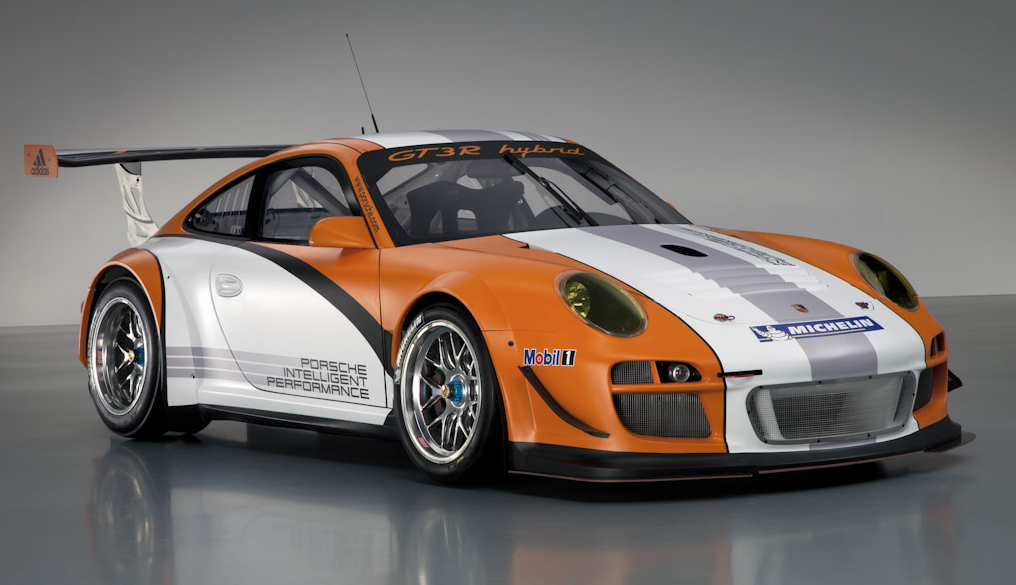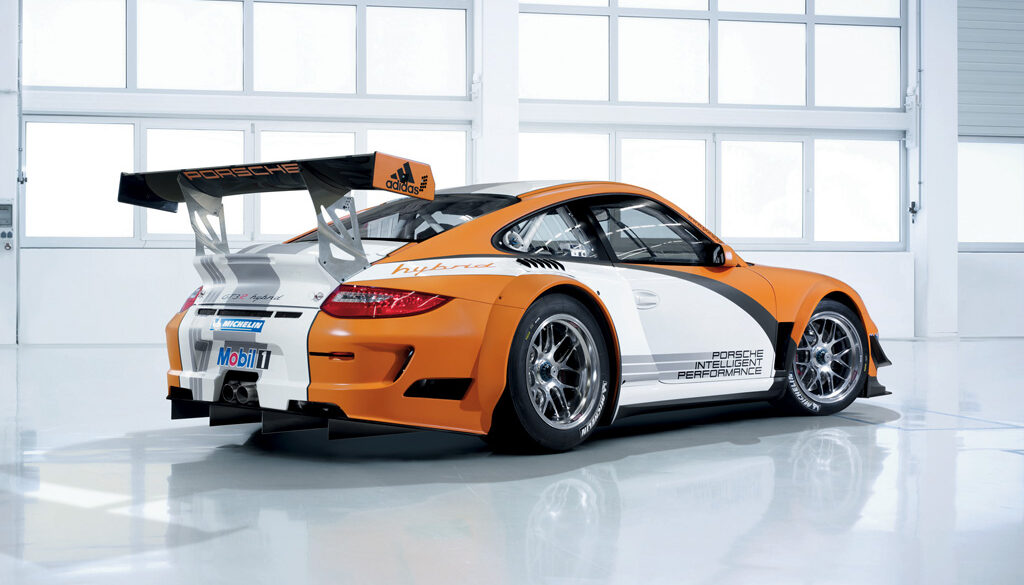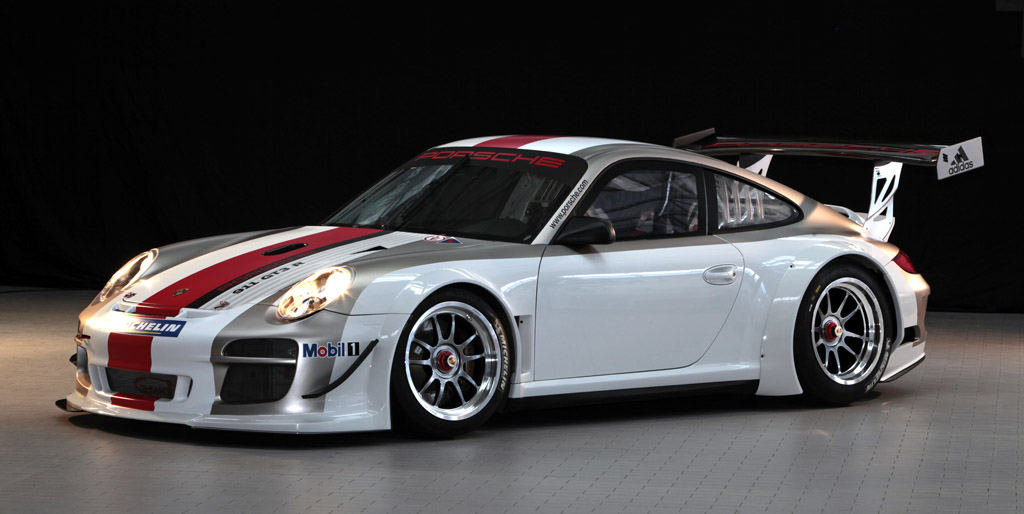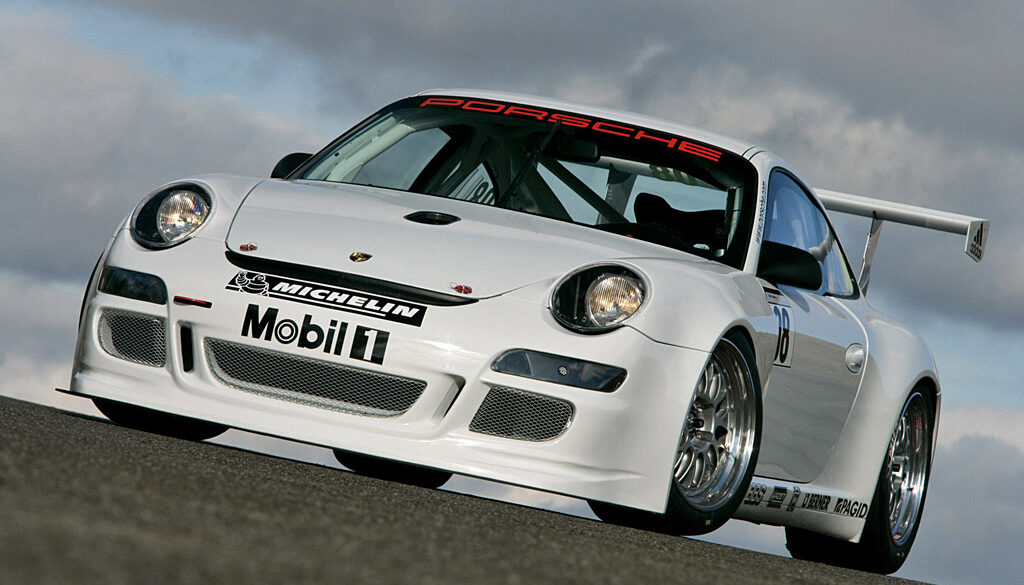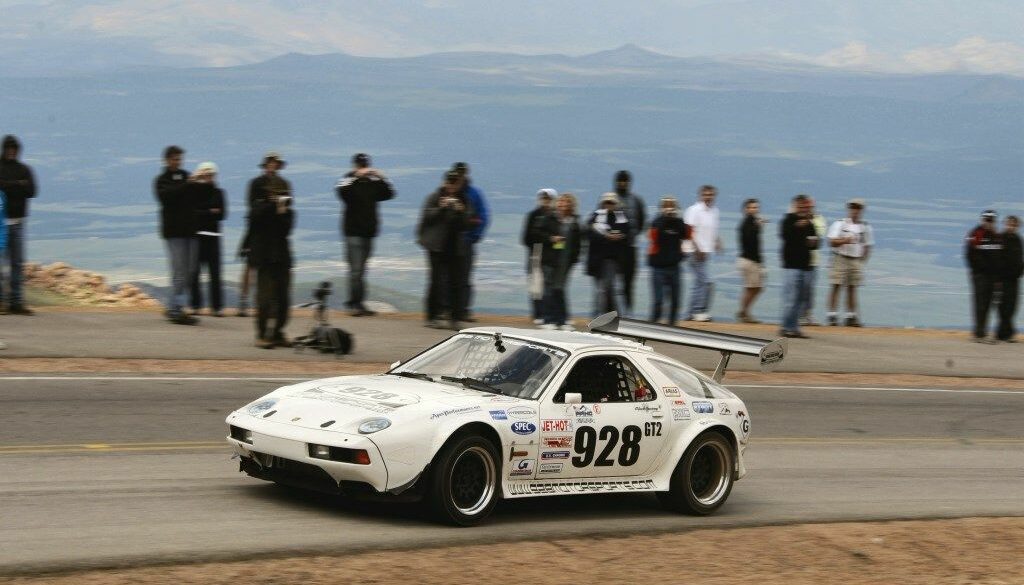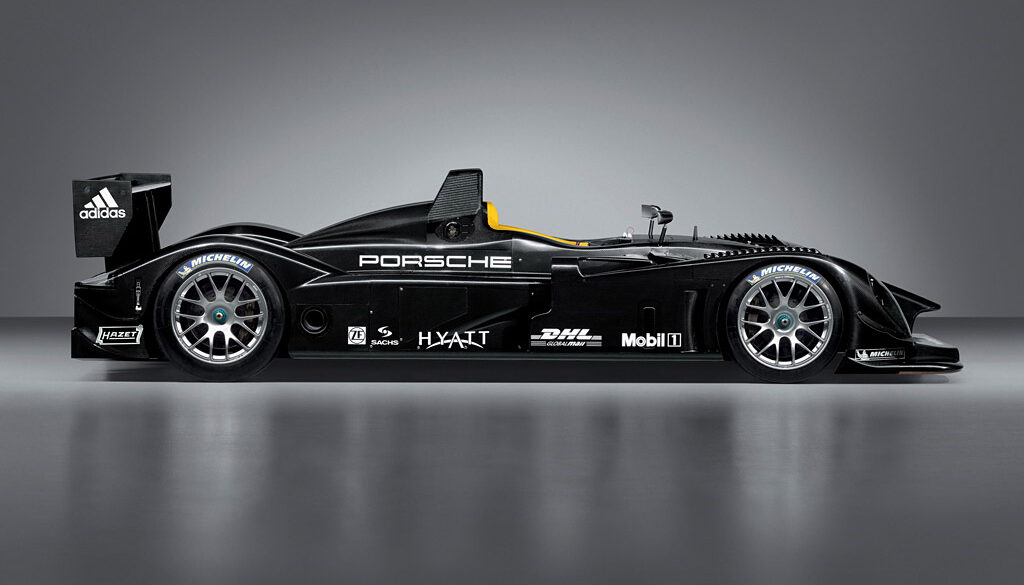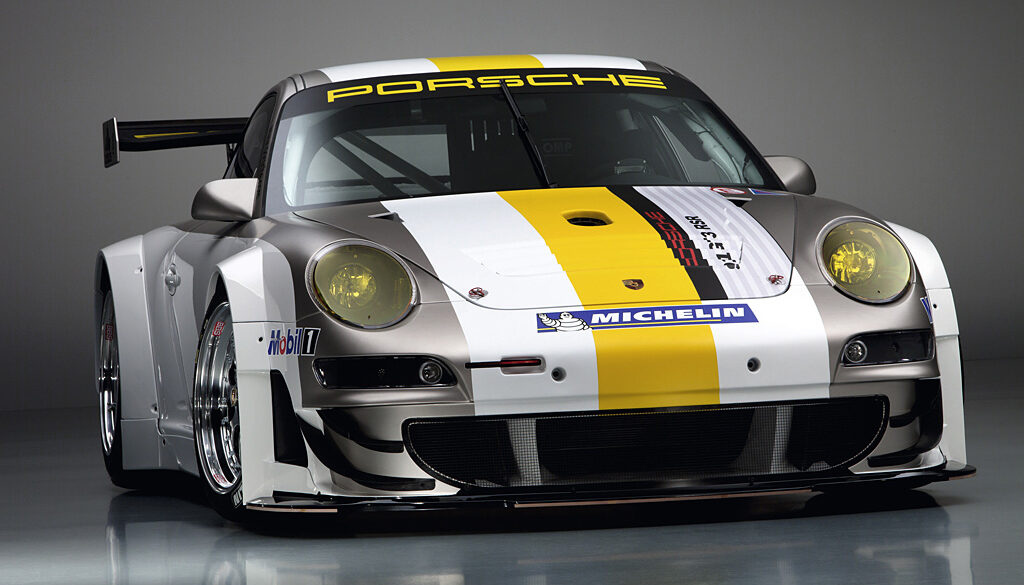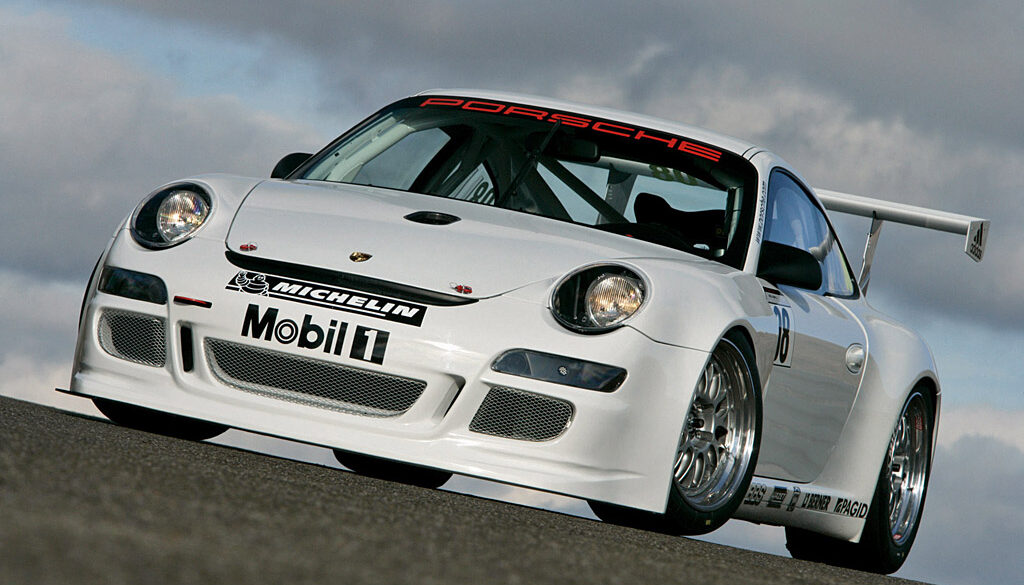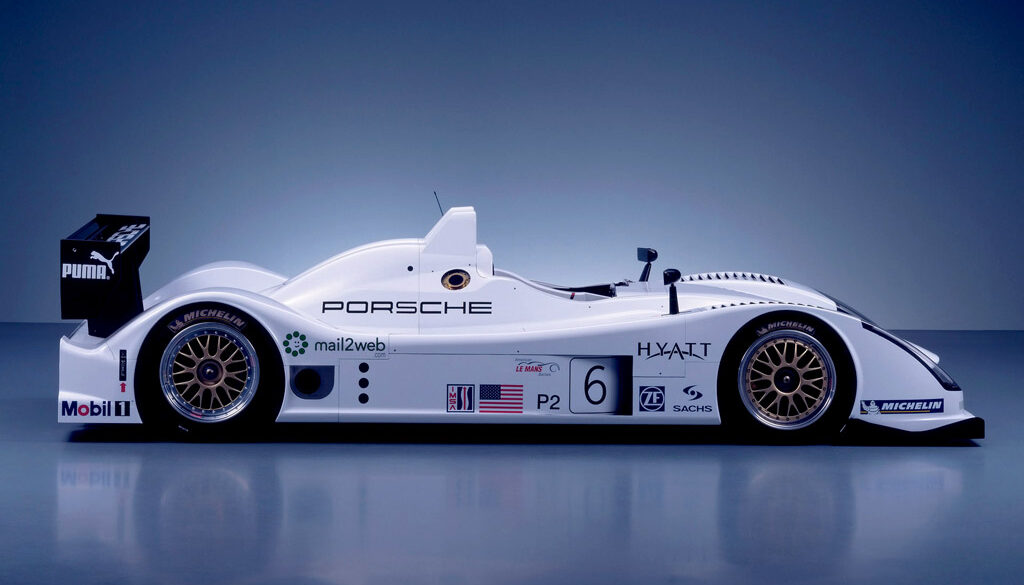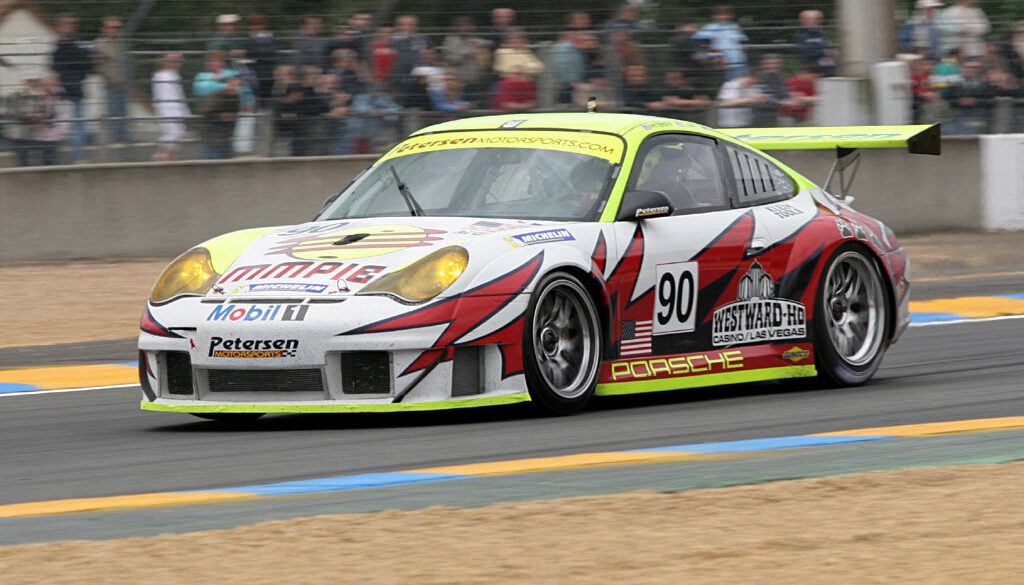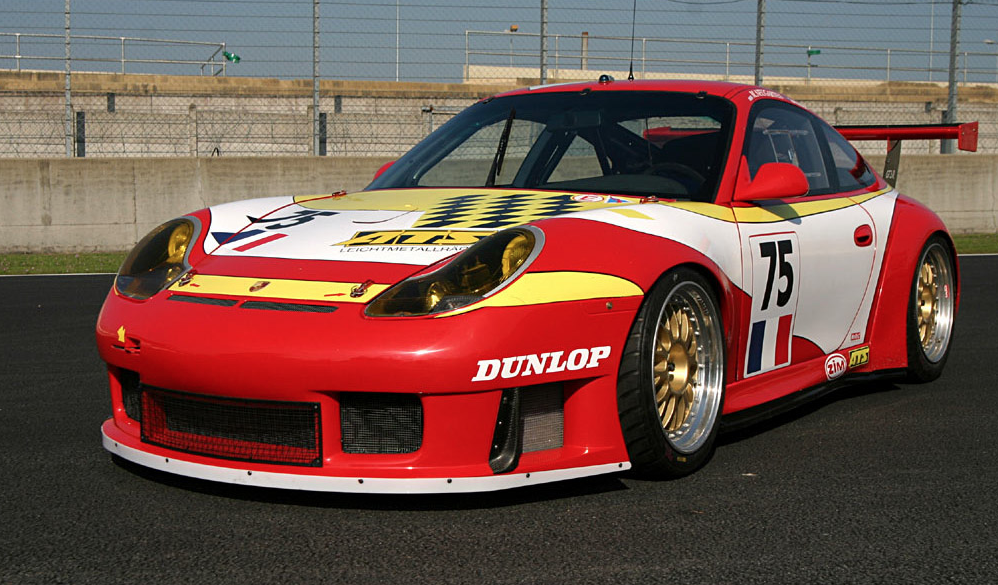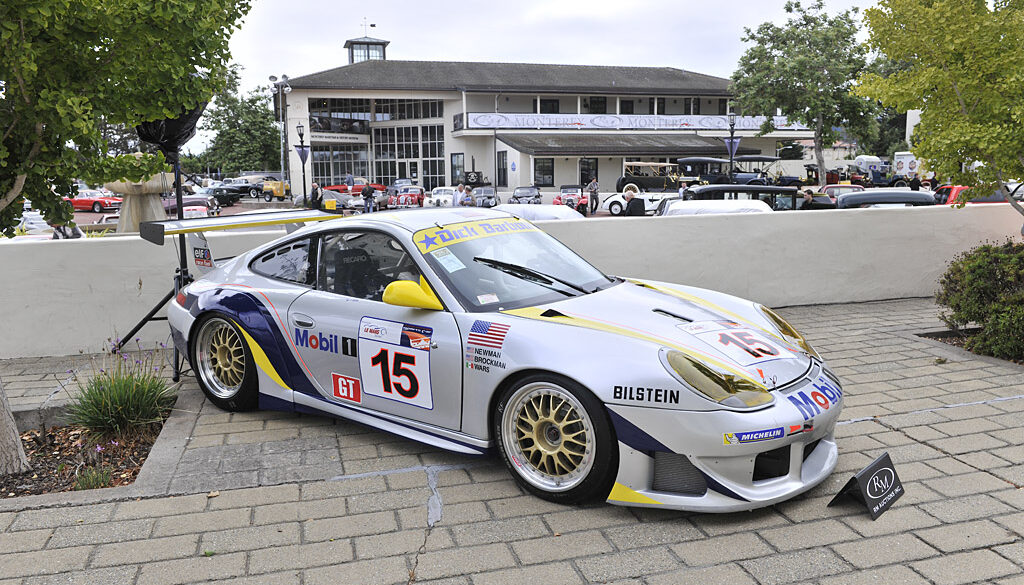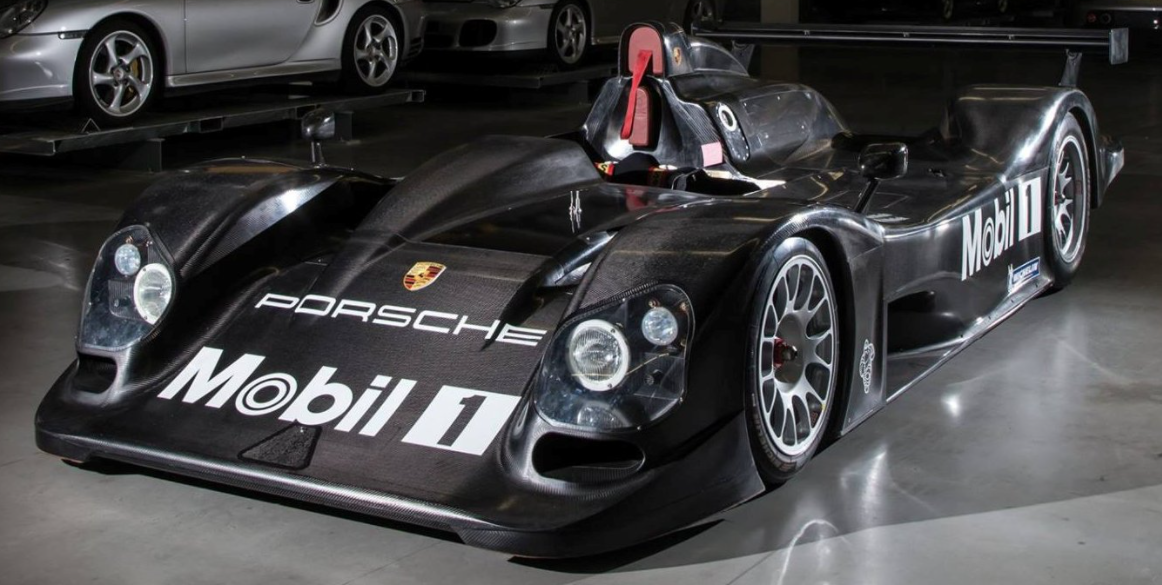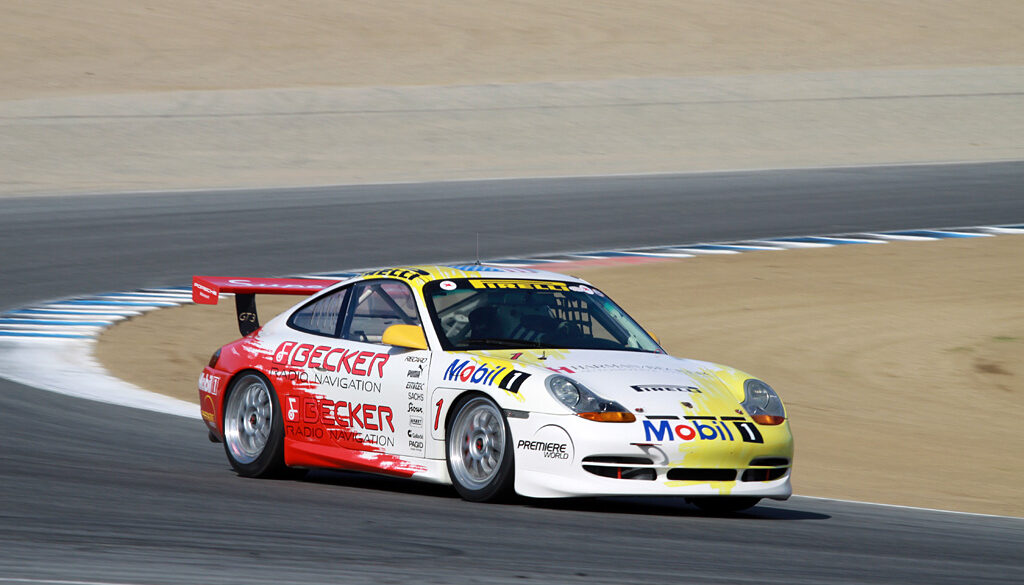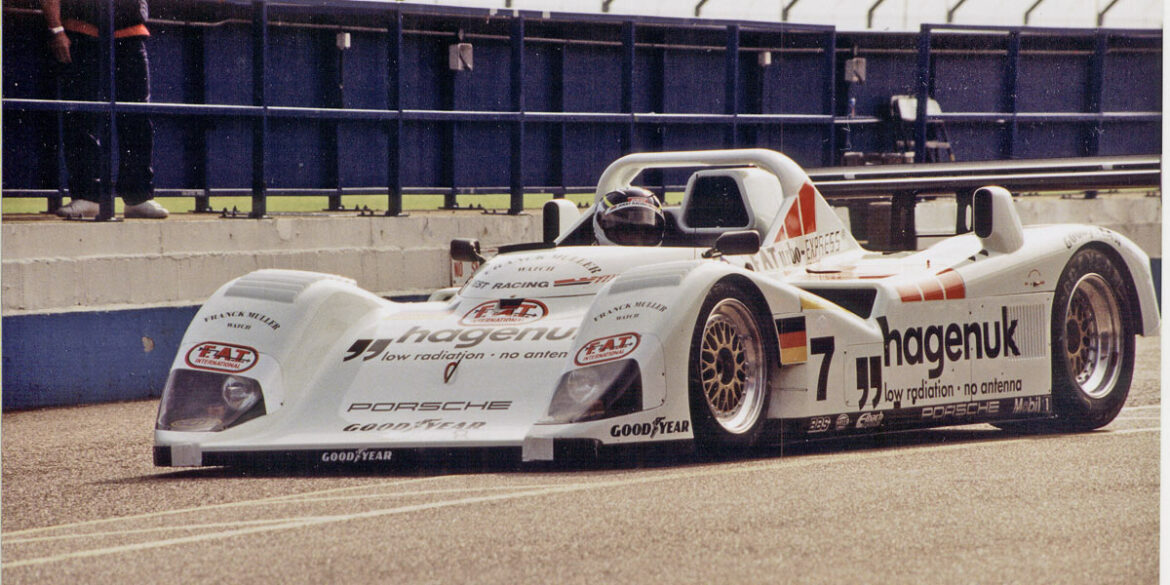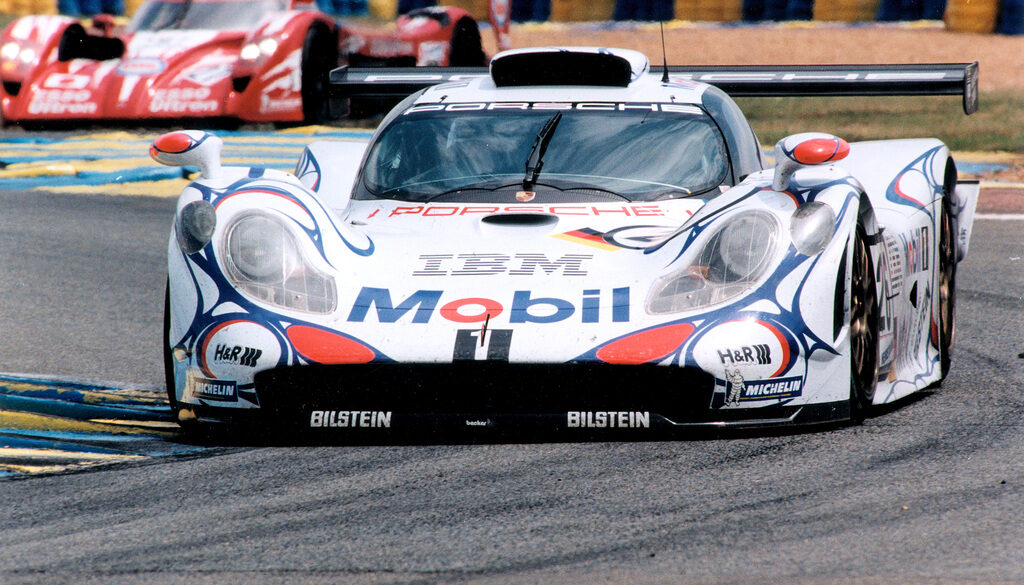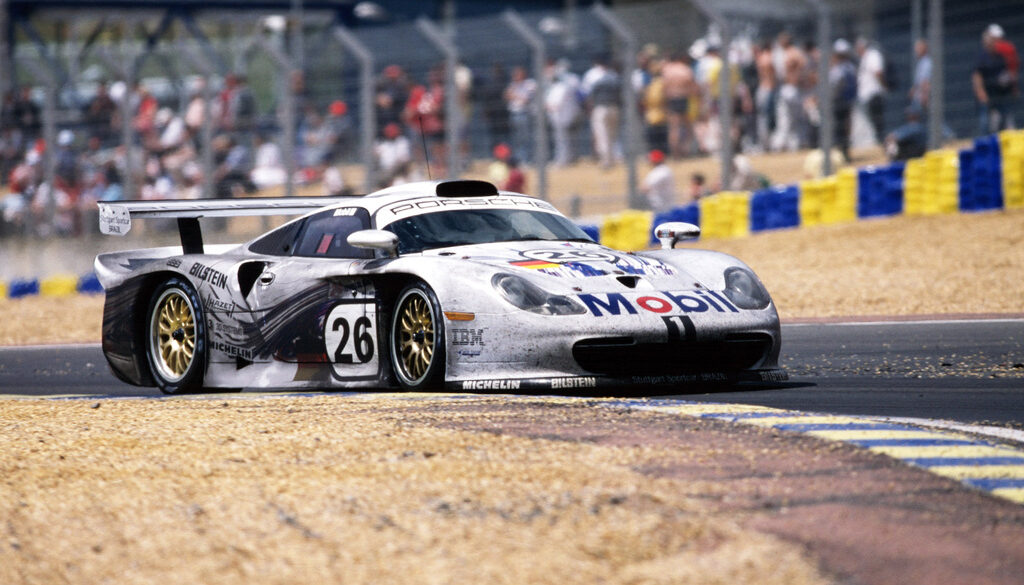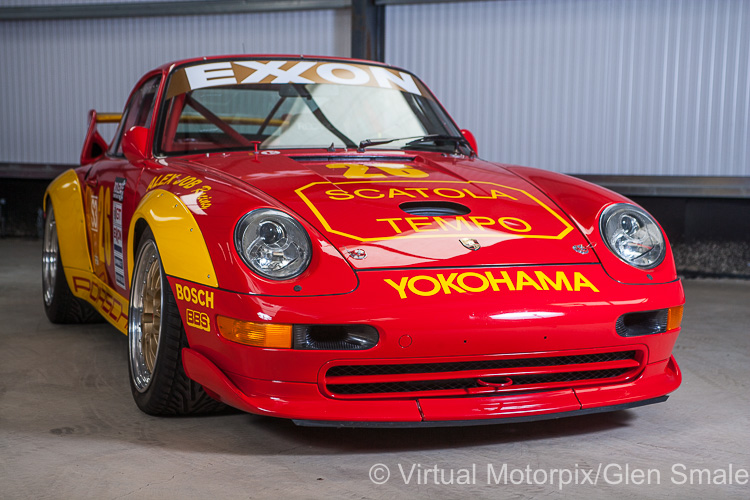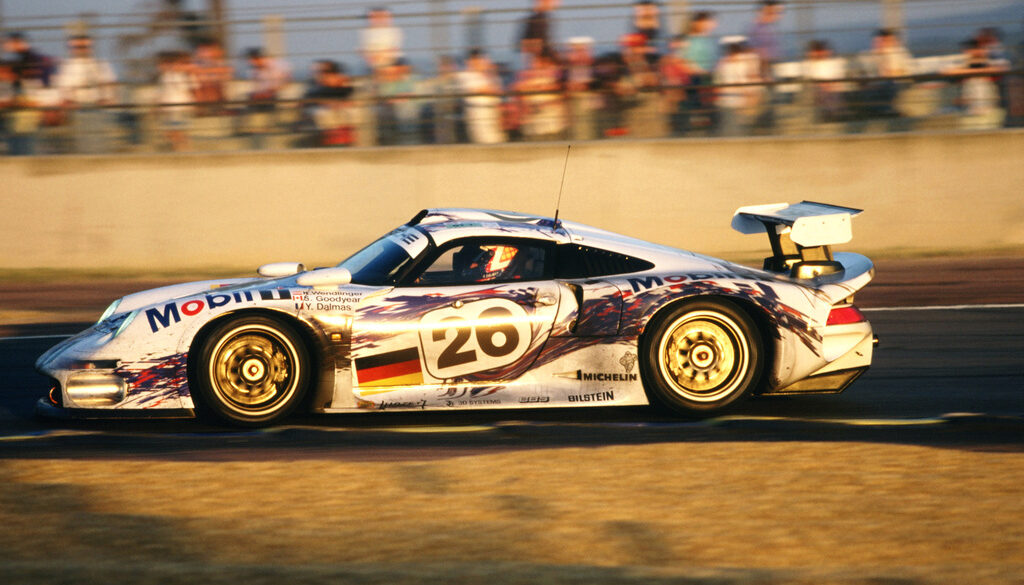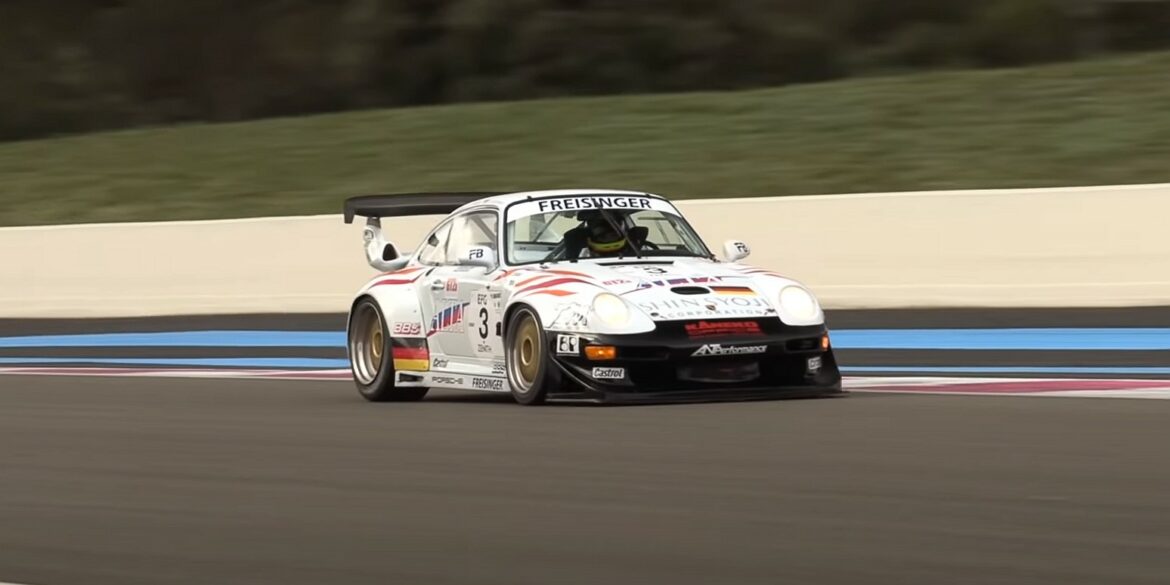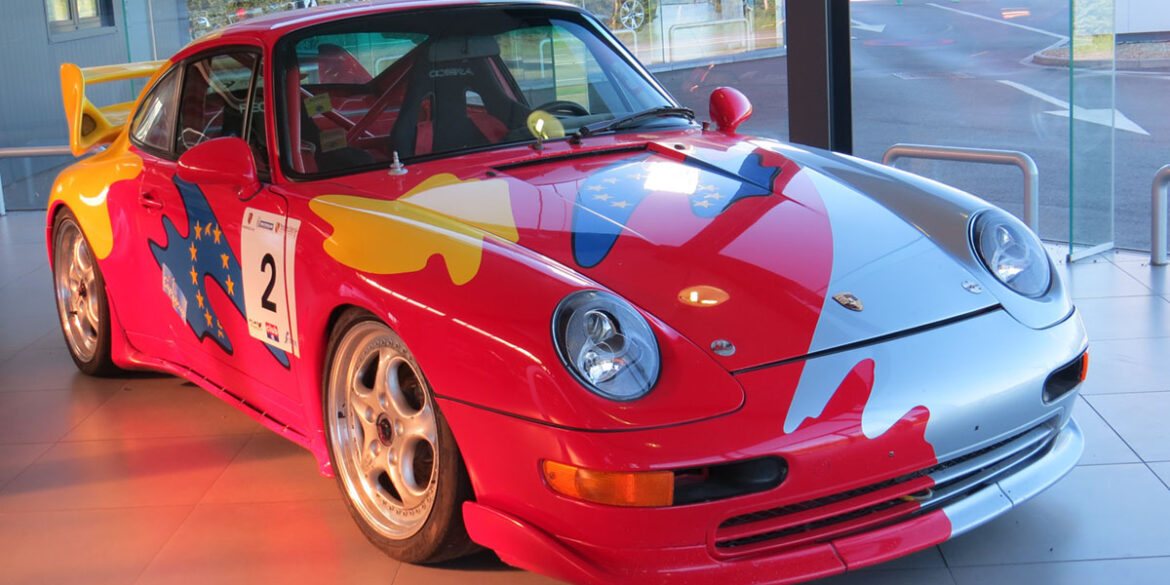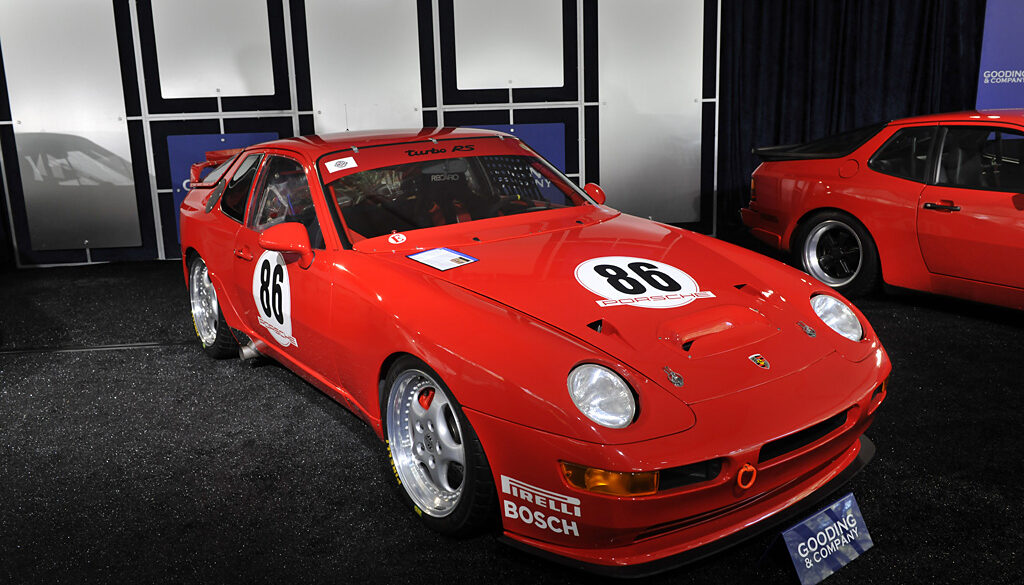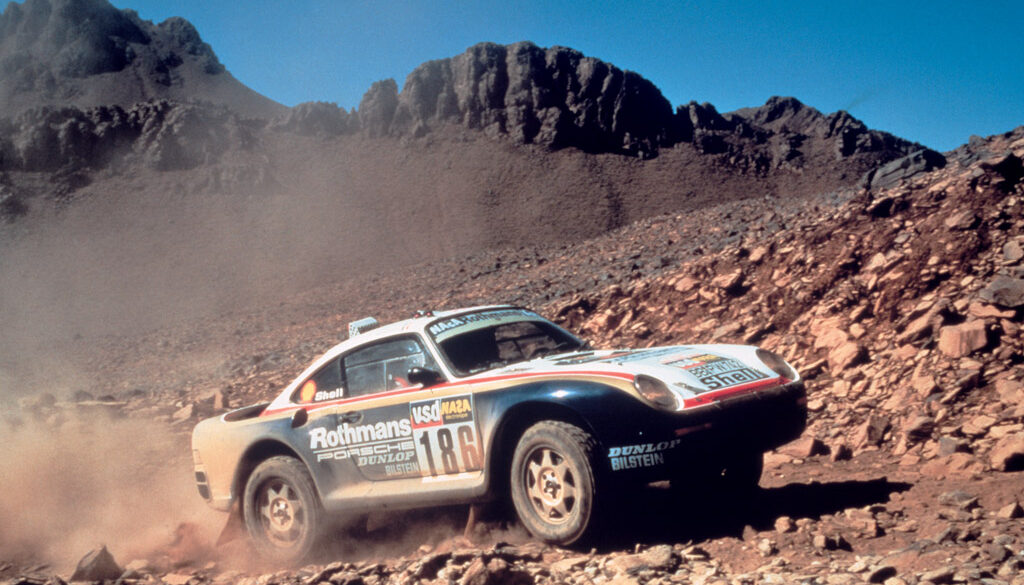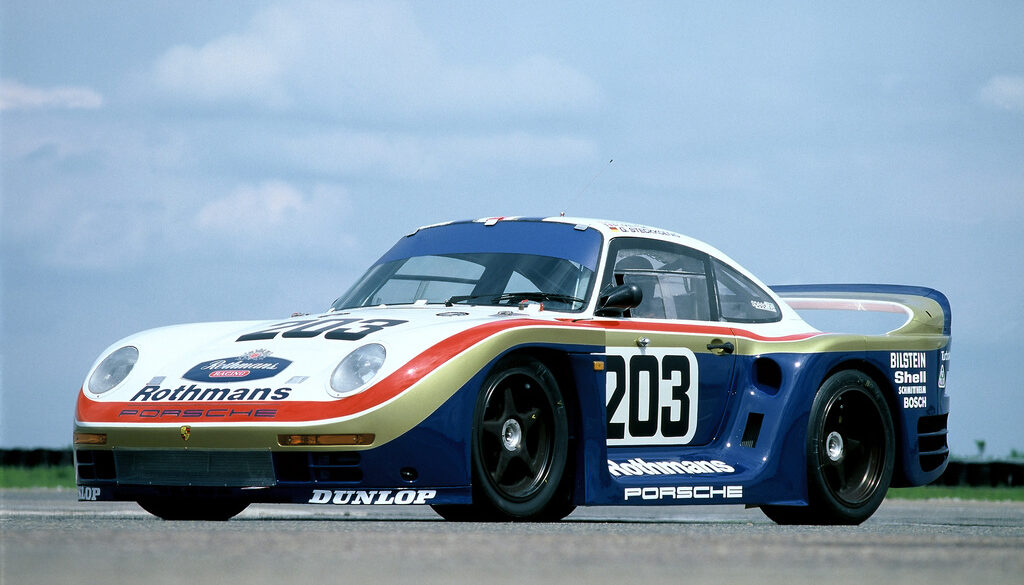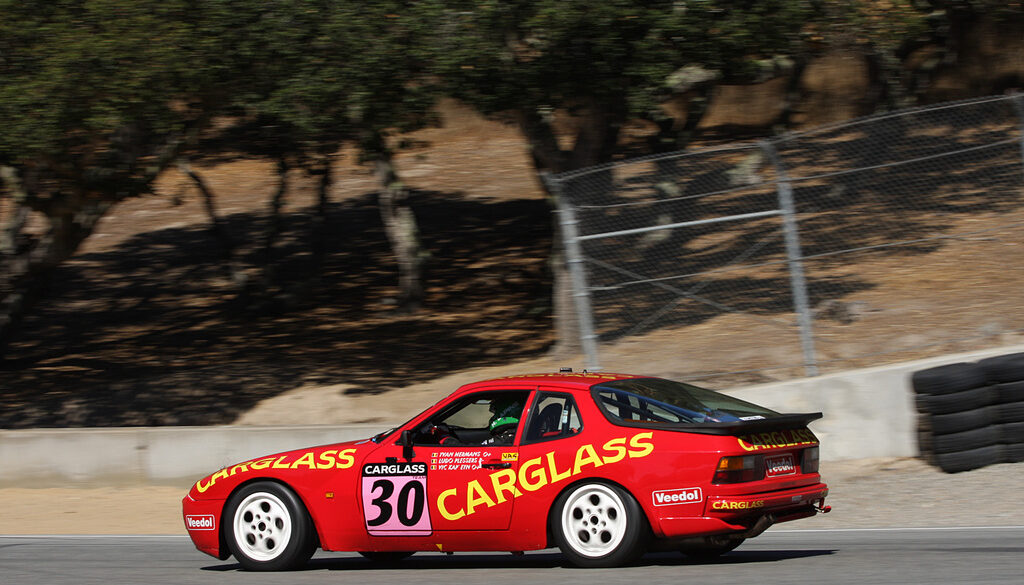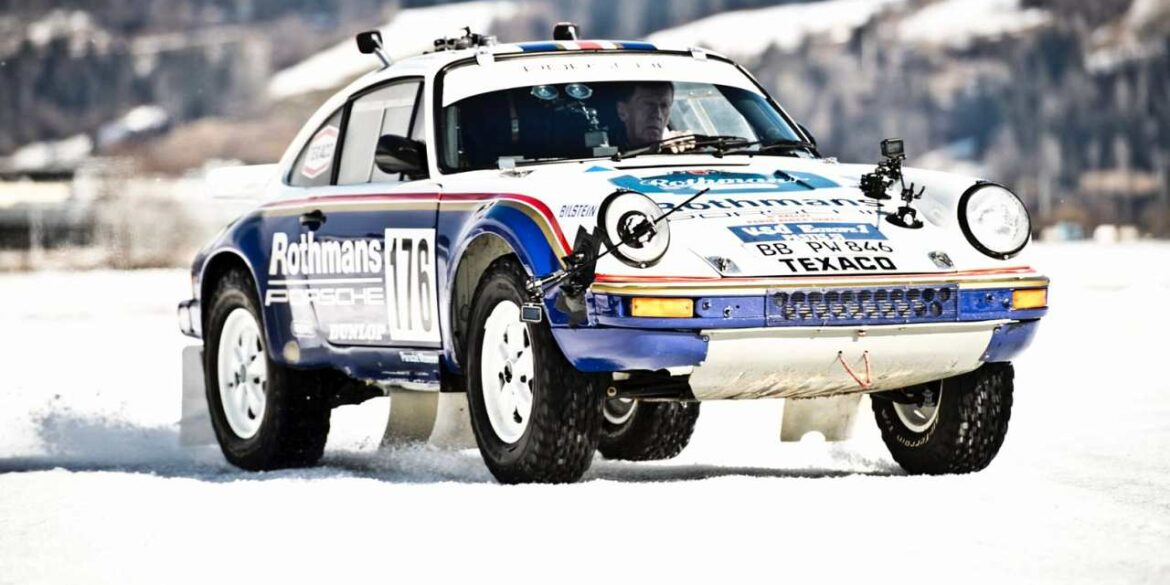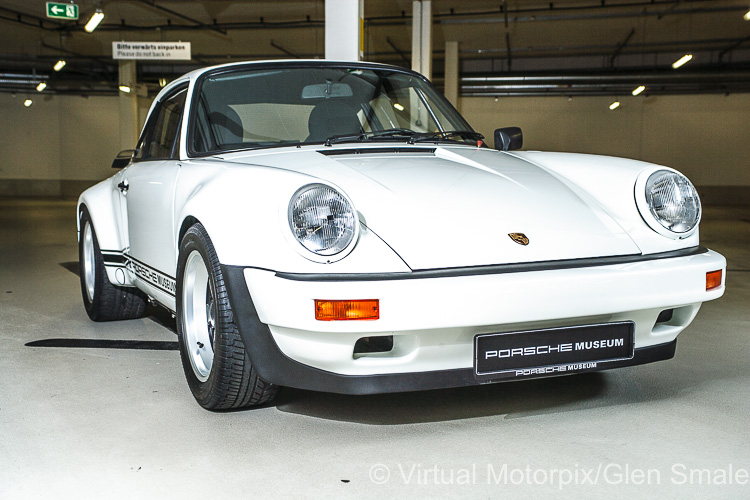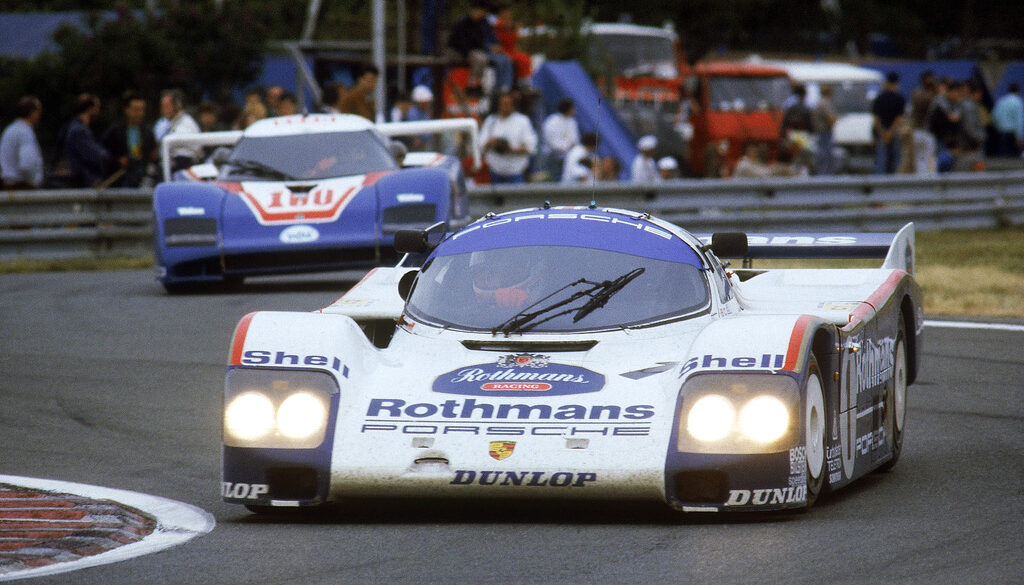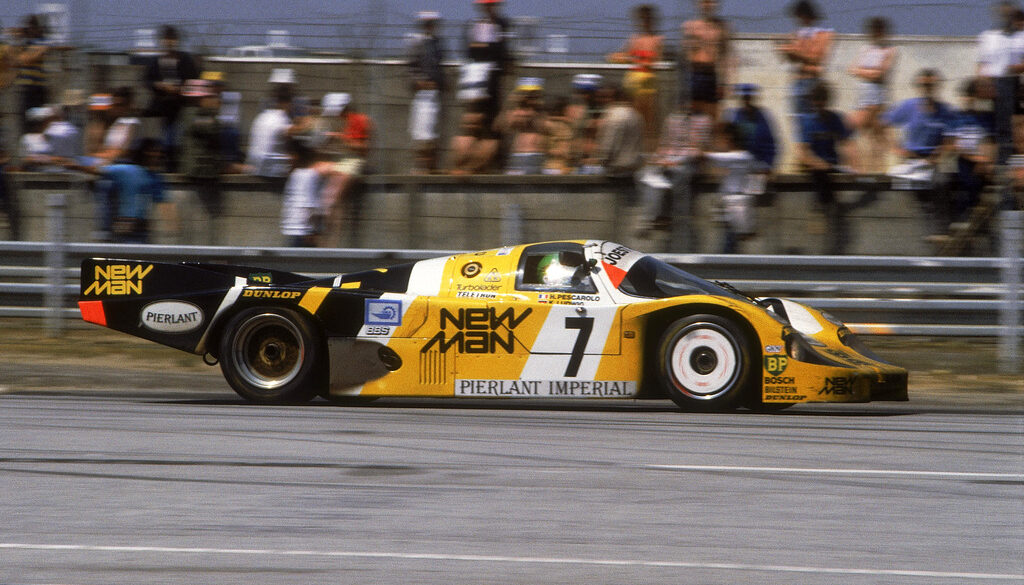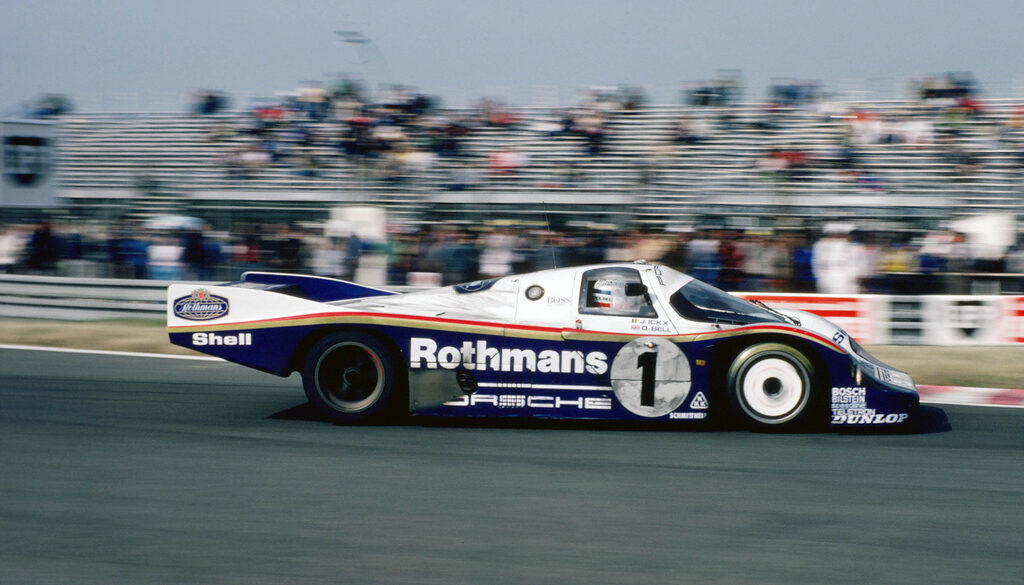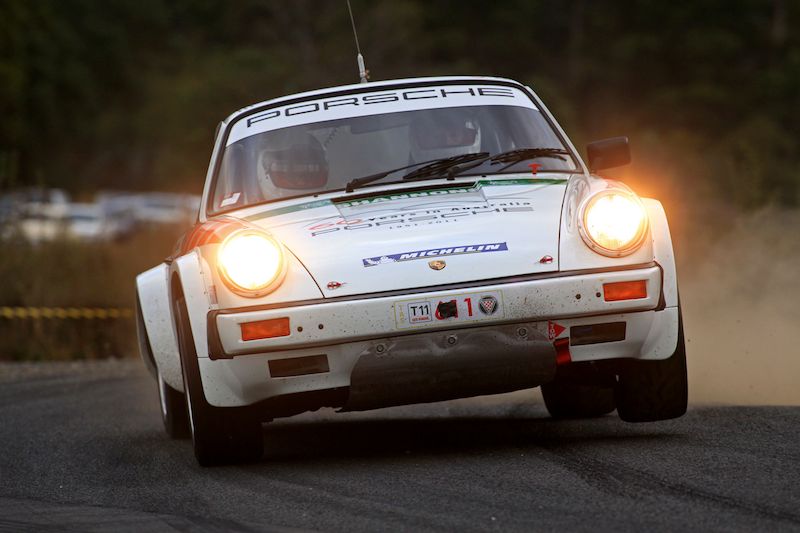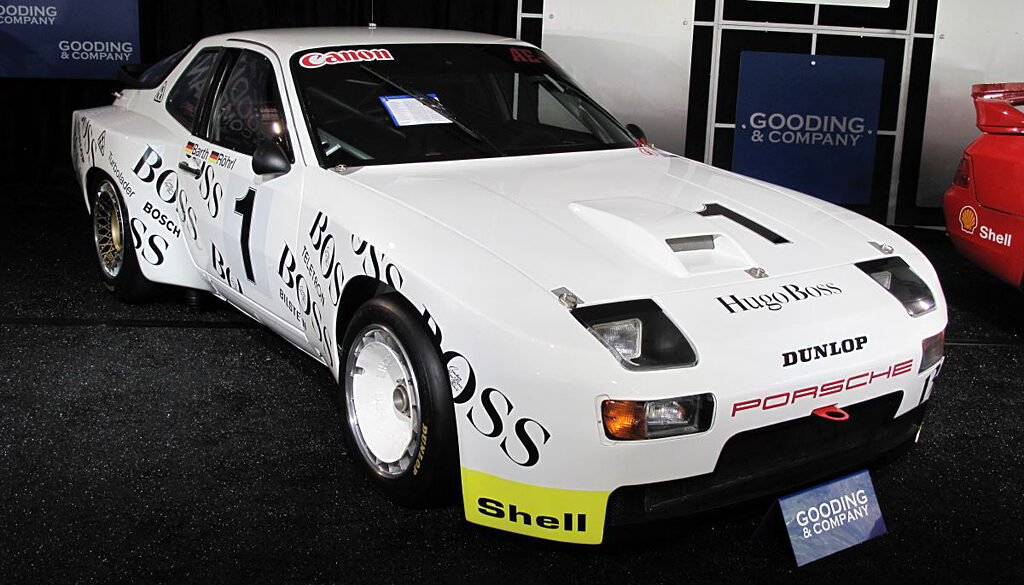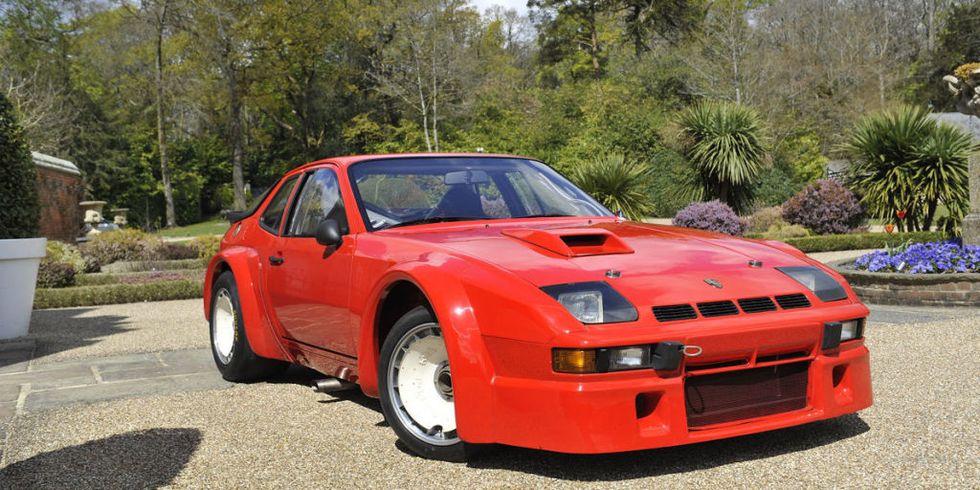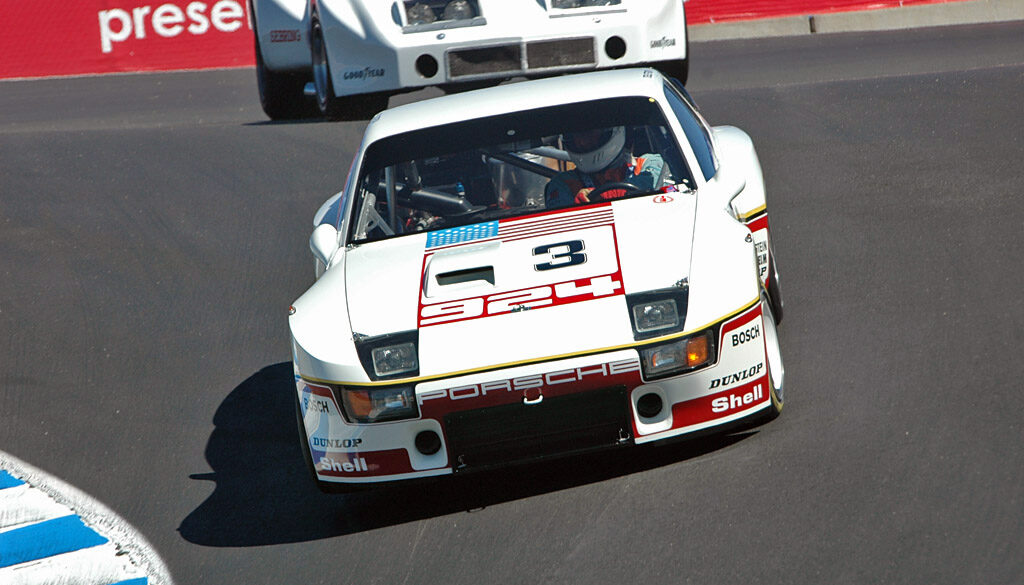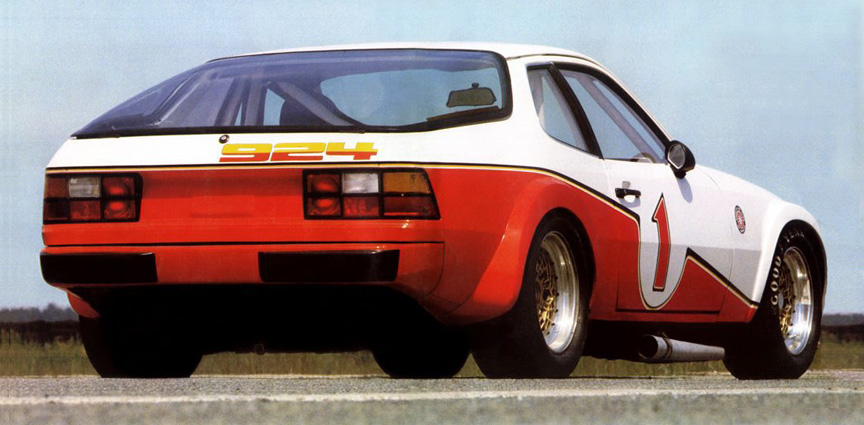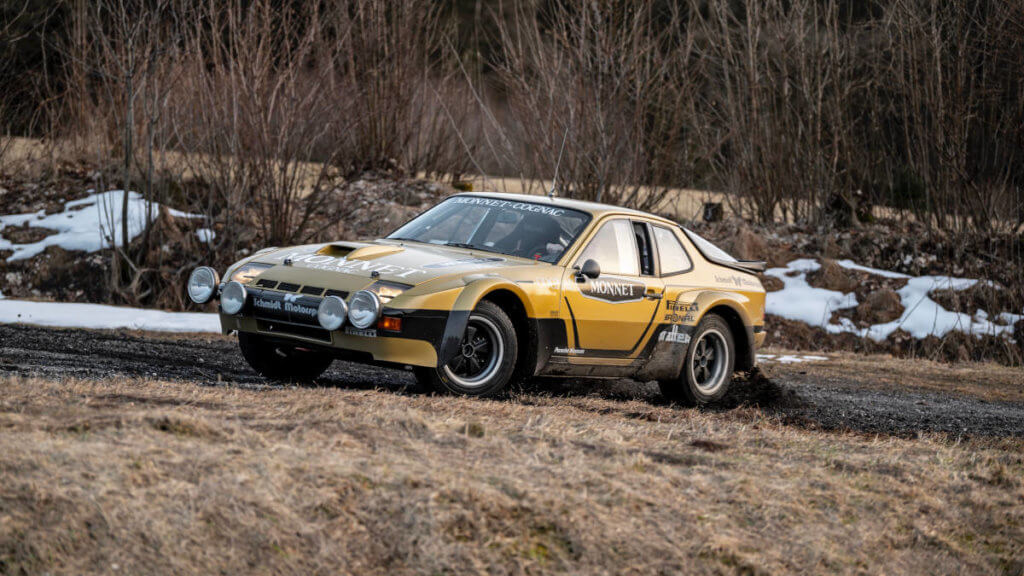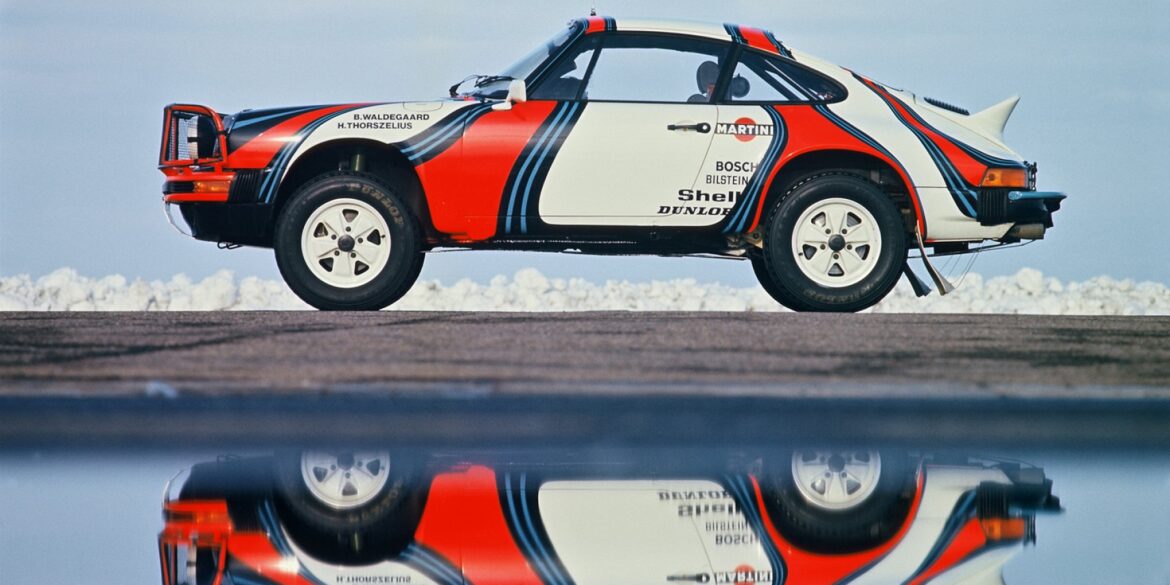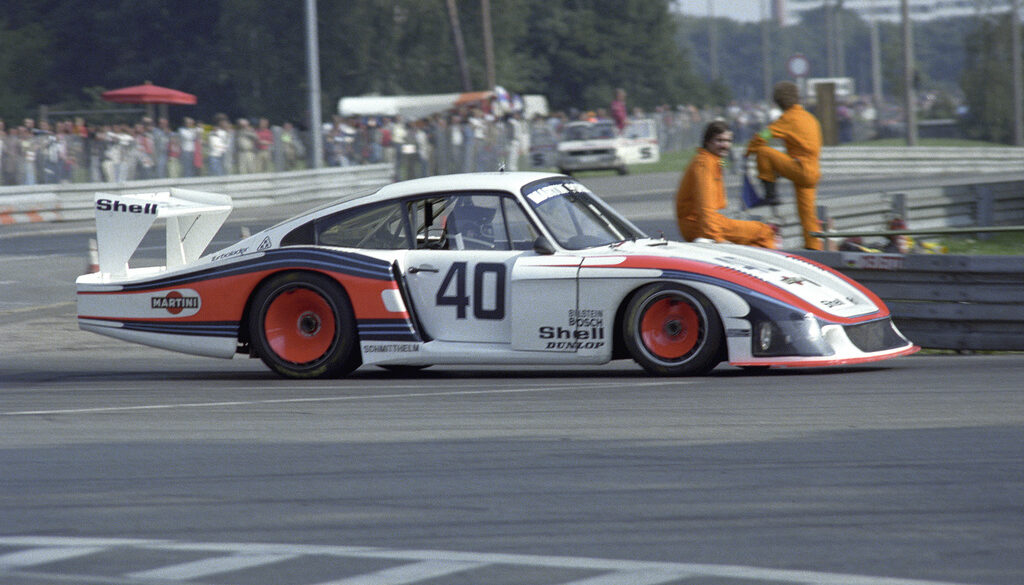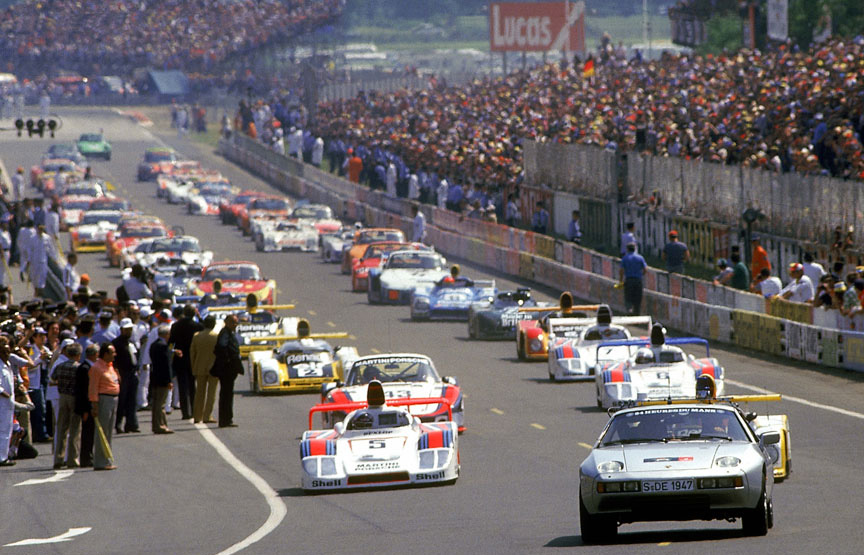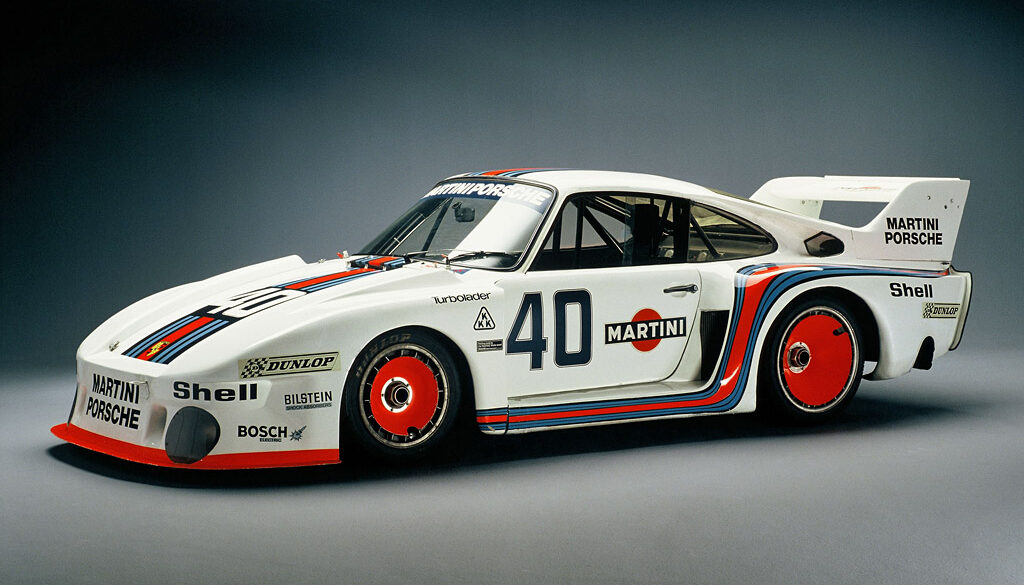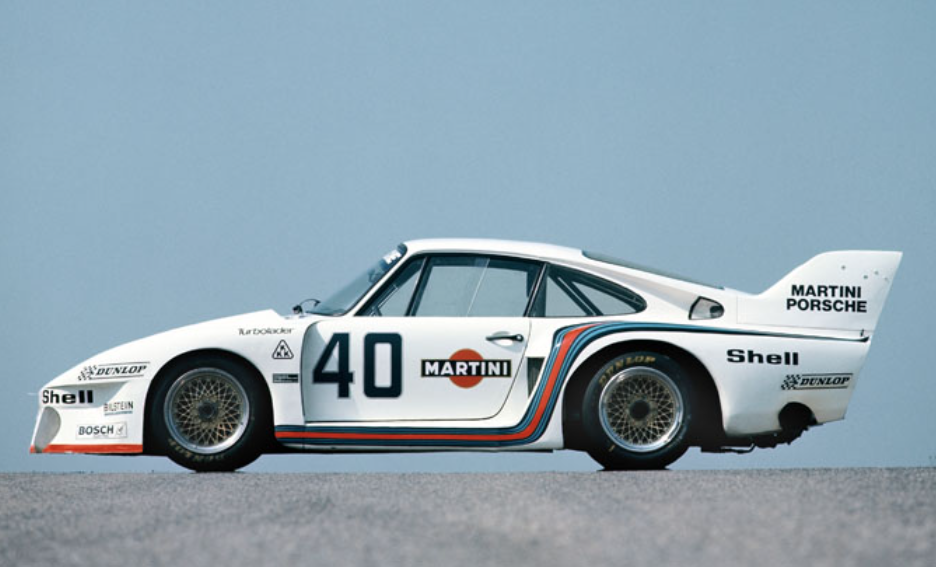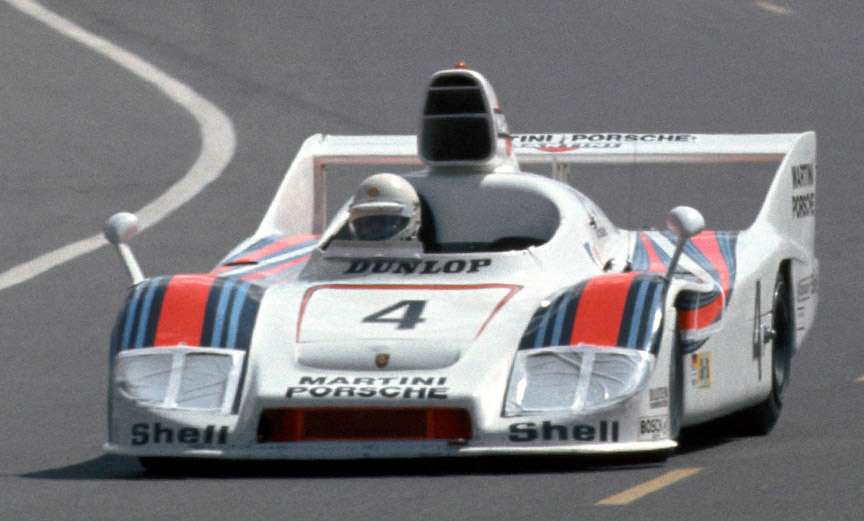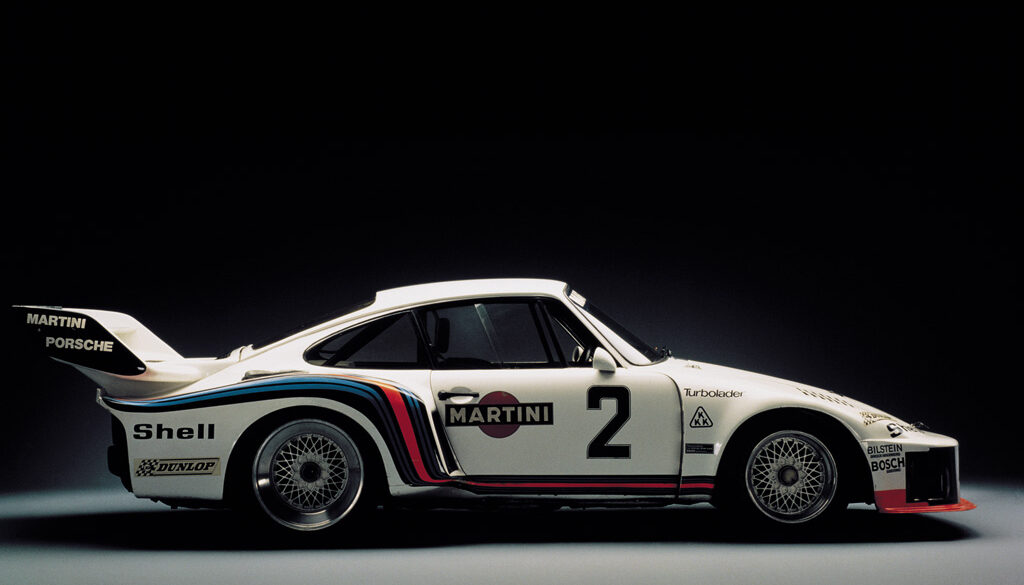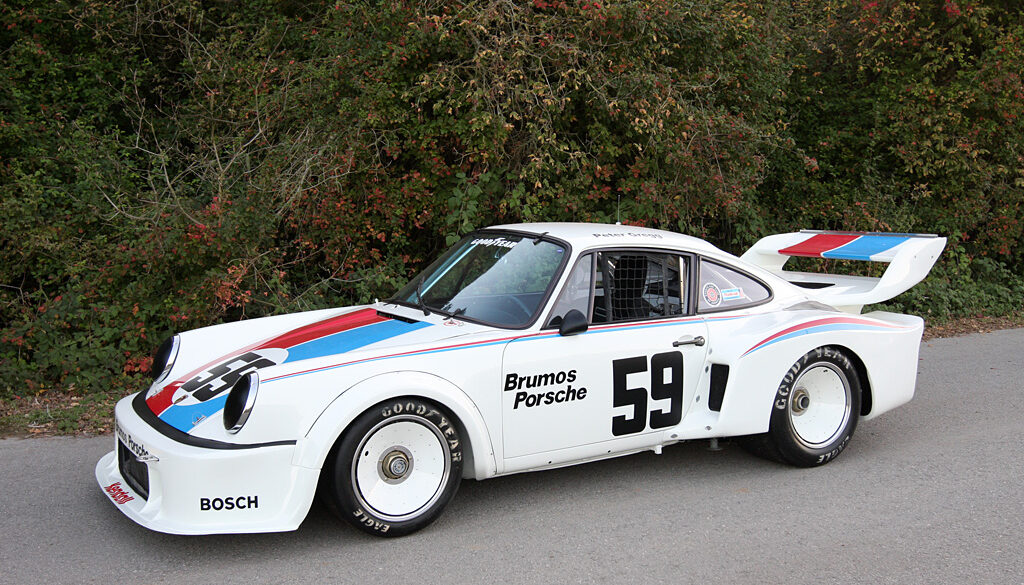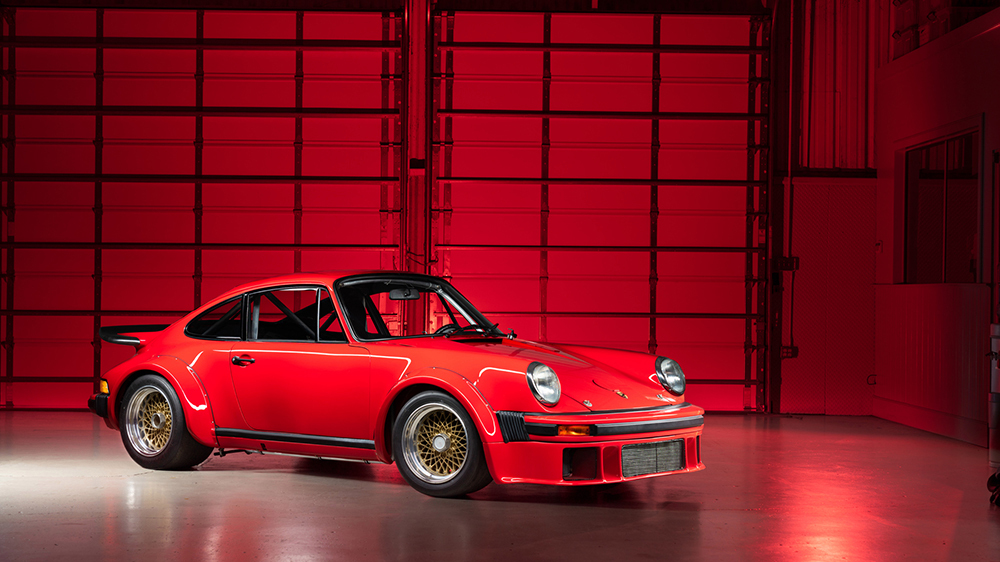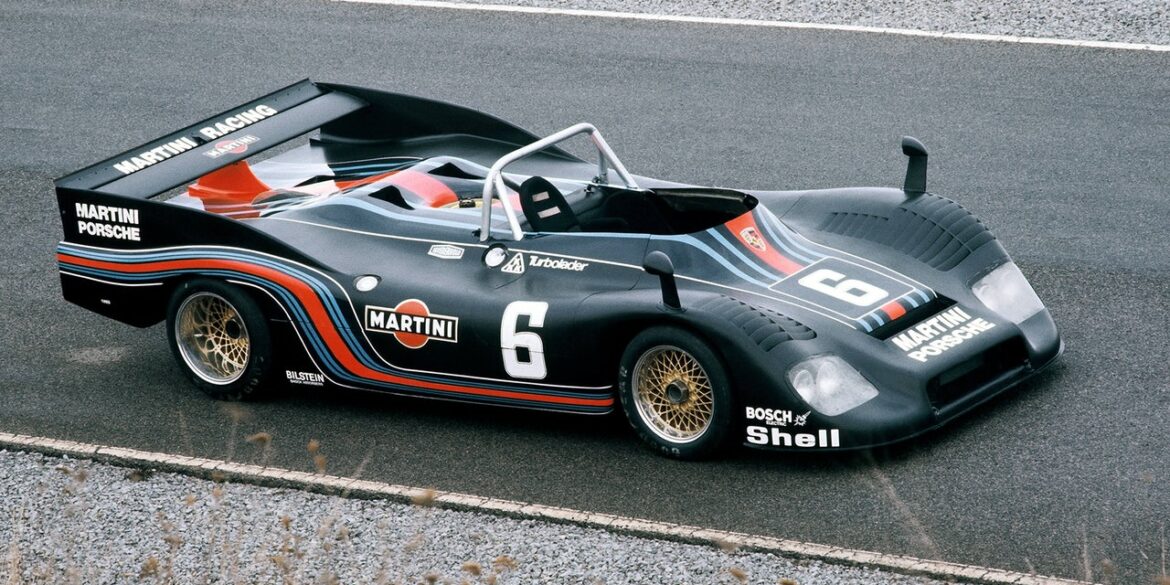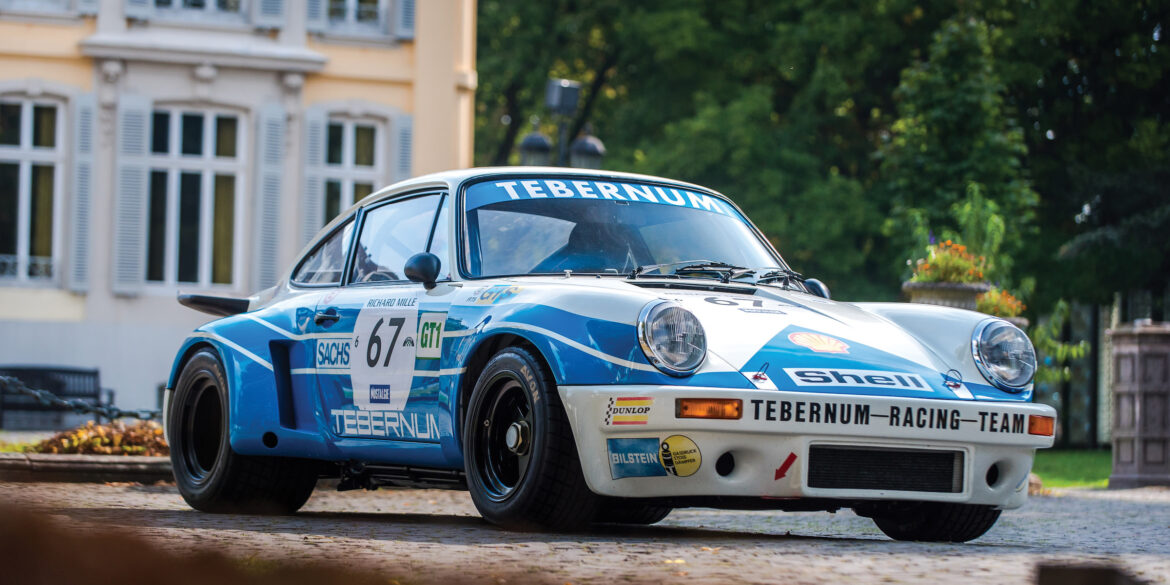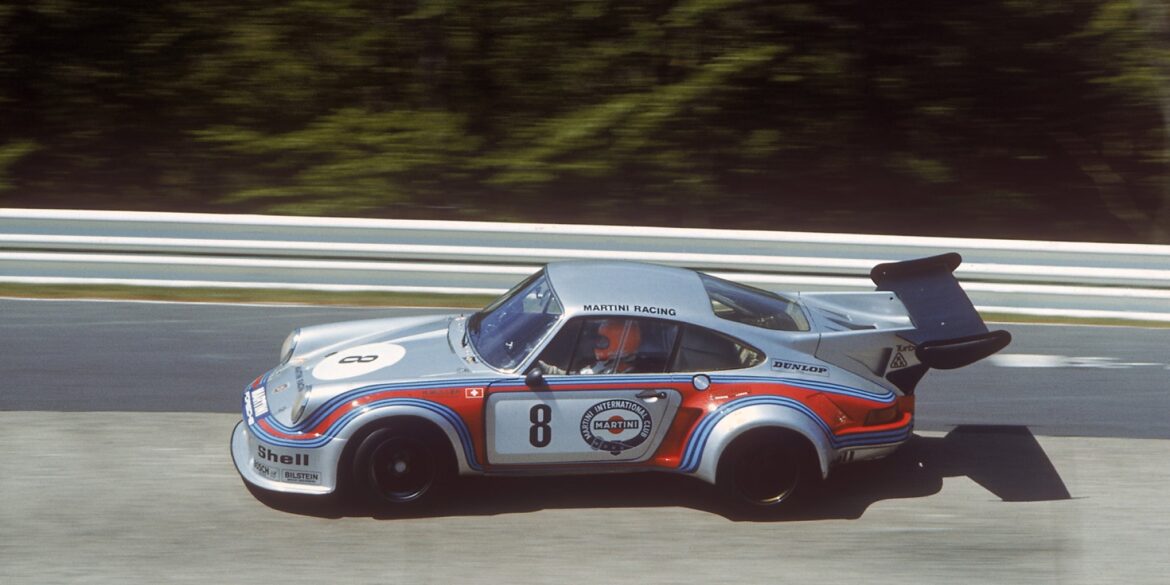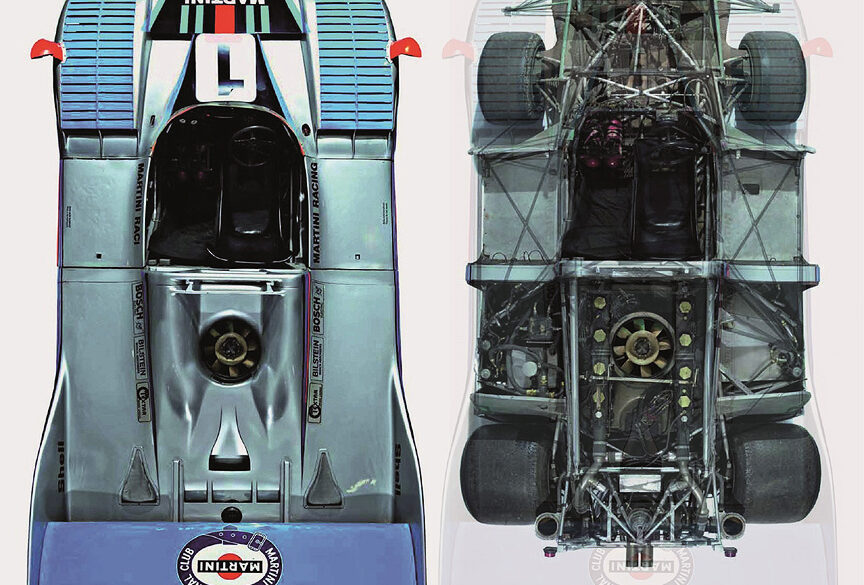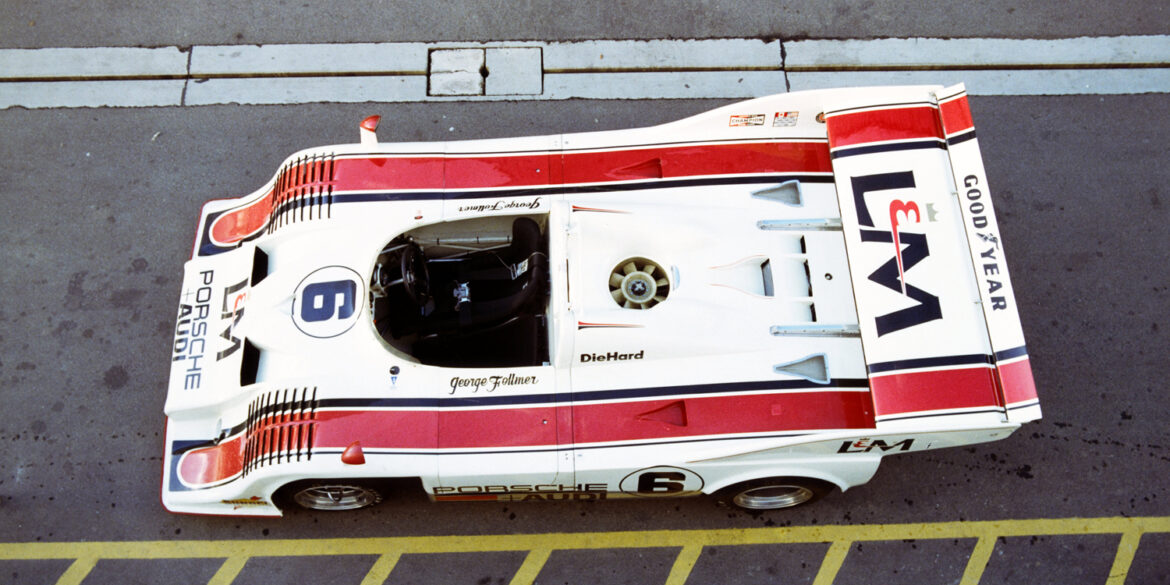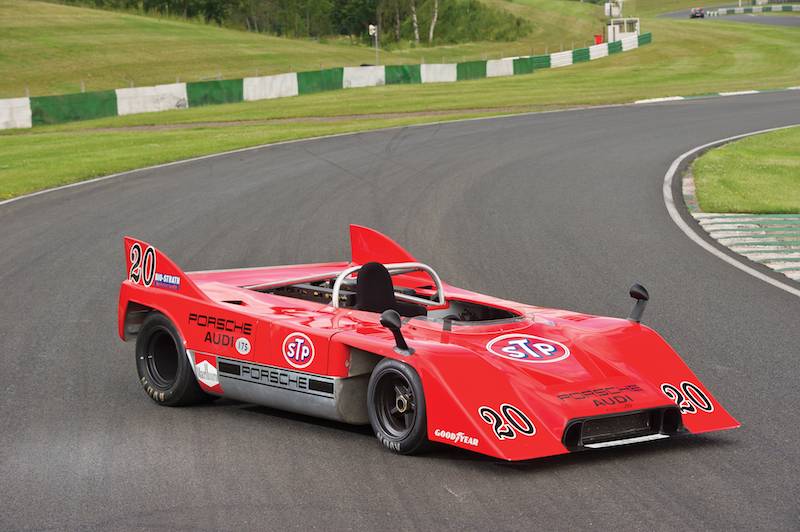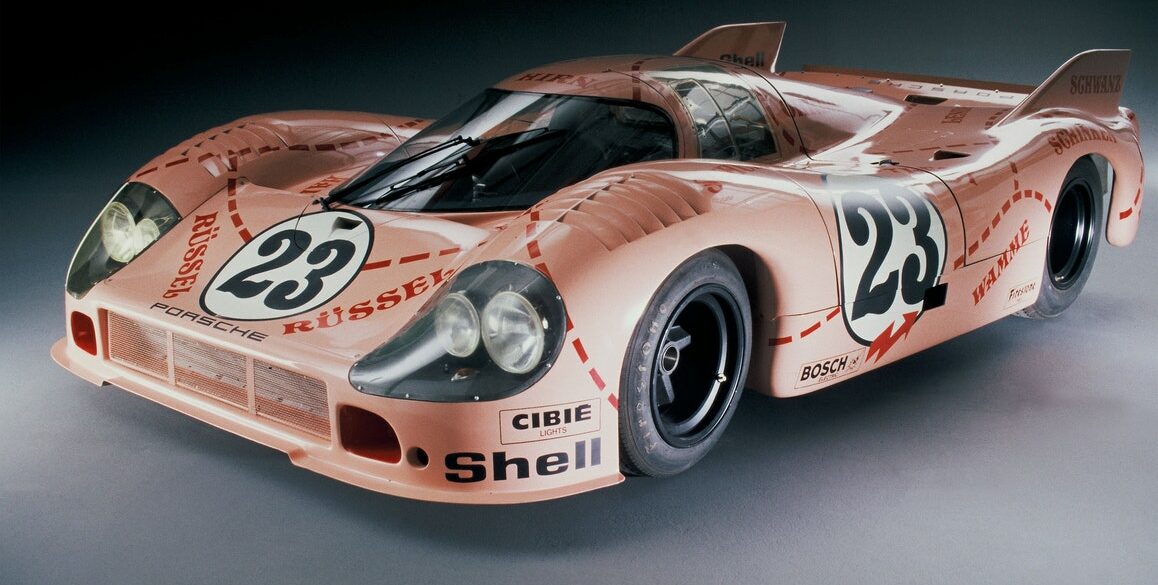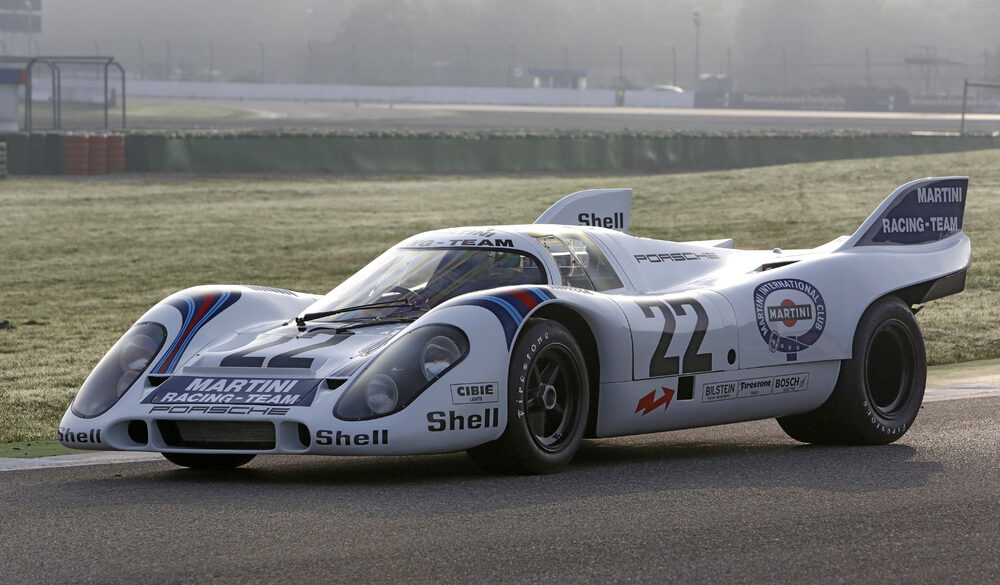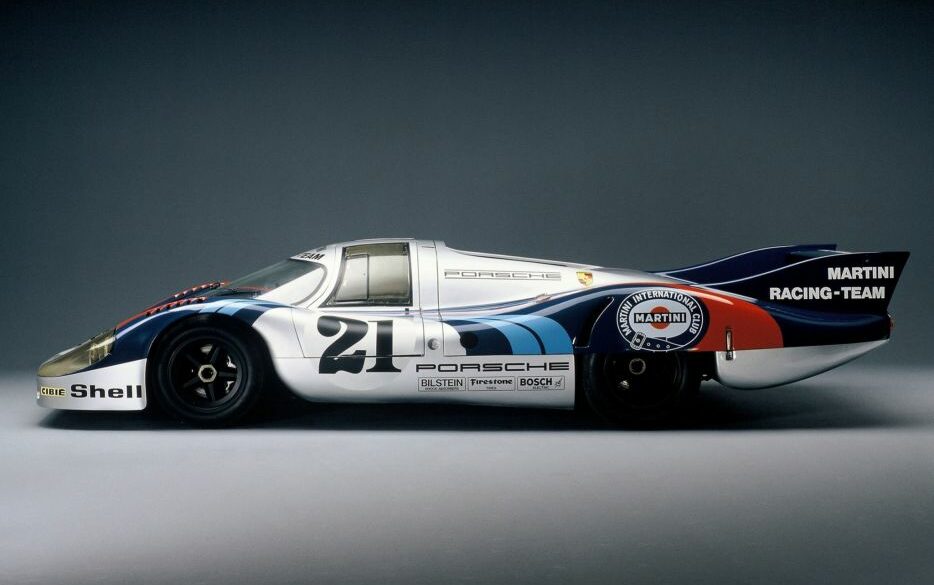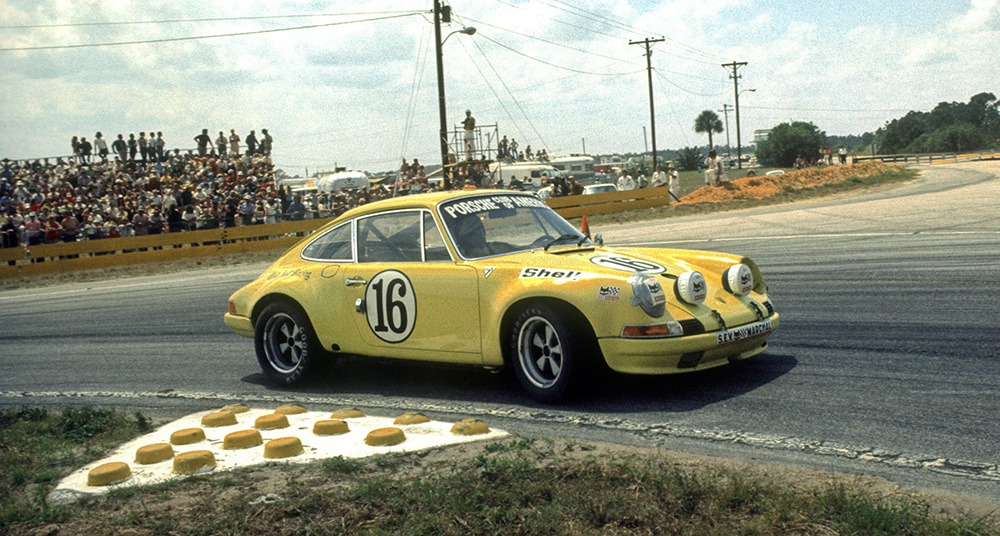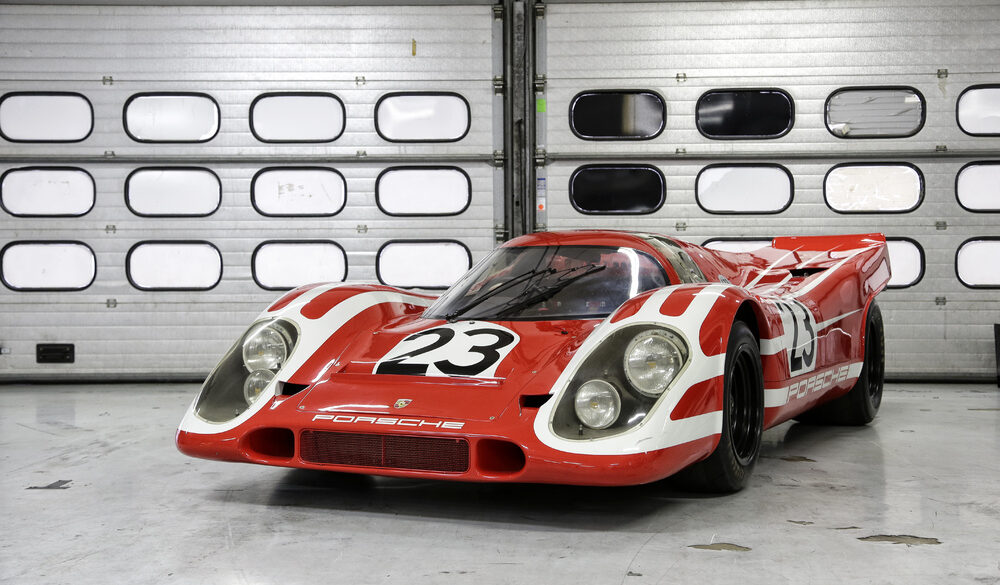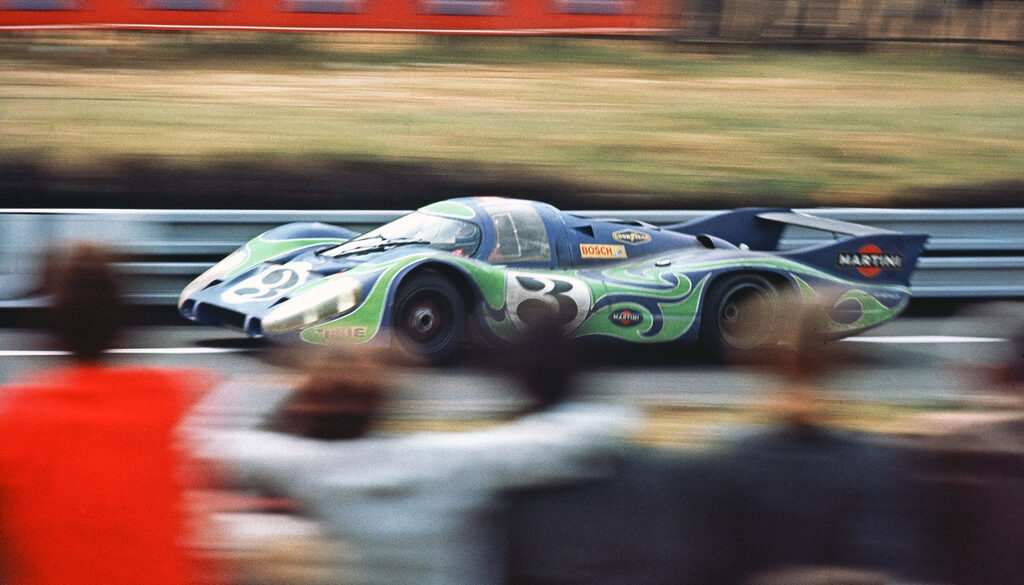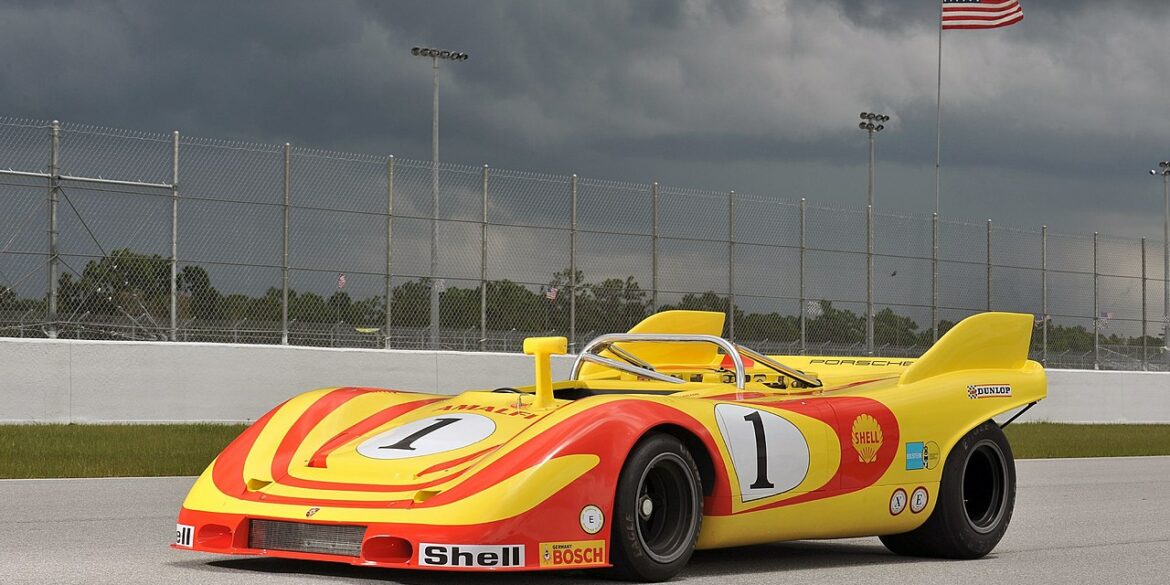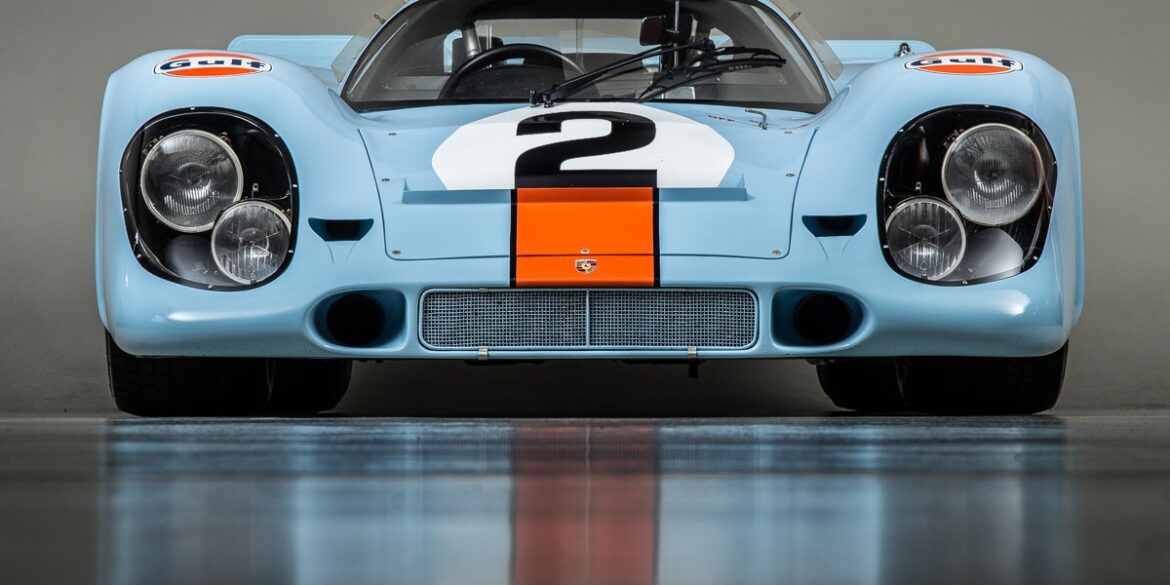With the car retiring after the 2017 LMP WEC season, the Porsche team decided to throw it a truly memorable send-off. Freed from any restrictions brought upon by strict regulations in the class it competed in, Porsche threw out the rulebook and established a new benchmark. Amongst the notable parting gifts was a significant horsepower bump, increasing the turbo V4 to 720 horsepower from 500 horsepower. Additionally, the electric motor received a 10% boost, now generating 440 horsepower. In total this gave the 919 a remarkable 1160 horsepower.
This car was officially called as the 911 GT2 RS Clubsport, but the name is rather misleading. The car was not built for the GT2 racing class which is long extinct and club sport has stood for Porsche club track days while this non-streel-legal car is a real racing car. Finally, the car was based on the 991 GT2 RS, which already had the Clubsport version. So, in order to understand what is what, we call it "991 GT2 RS Clubsport racing version". The 991 GT2 RS engine with 515 kW was powerful enough, so it was not tuned.
Two decades after the different 911 GT1 cars the mid-engined 911 is back! In order to install a proper diffuser under the rear end of the 991, the engine had to make room for it and the engine/transmission unit was rotated 180 degrees. The extended rear diffuser, a top-suspended rear wing and the new side mirrors help to increase downforce with reduced drag. The FIA rules meant no turbo was needed due to power limits, so the normally aspirated 4-litre flat-6 was taken from the 991 GT3 R.
#21 Martini Porsche 917 LH (chassis #042) was driven by Gerard Larrousse and Vic Elford in the 1971 Le Mans 24 Hour race – DNF, lost engine cooling fan From 1964 through to 1969, Porsche lifted its game from being a class winner to setting international lap speed and endurance...
Daytona 24 Hours, 31 January/1 February 1981: Bob Garretson, Bobby Rahal and Brian Redman driving the #9 Porsche 935 (chassis #009 00030) would go on to win the race by 13 laps, having started from 16th on the grid The Flying Tigers strike again! Being the best on the planet in...
Porsche 935 chassis no. 009 00030, the Old Warhorse speeds up the hill at the 2015 Goodwood Festival of Speed with Brian Redman at the helm This is a story of the incredible career of Porsche 935 009 00030, one of the most amazing race cars ever, or as someone...
In this episode, we get to see a Porsche 718 living strong even after all these years as the story behind it is being told. “Once you get it on song, get up to 7,000-plus-revs, it was absolutely amazing,” says racing driver Derek Bell, “…and the fact you could brake so...
Developed to follow in the steps of its Le Mans winning predecessors: The new 2017 Porsche 919 Hybrid is upon us! Carrying the same 2.0-liter V4 gasoline-powered engine and hybrid system, Porsche has optimized its energy recovery systems in the brakes and exhaust to feed even more power to the updated lithium-ion...
Le Mans 24 Hours, 20/21 June 1964: Porsche 904/8 of Edgar Barth/Herbert Linge before the start of the race The introduction of the Type 904 heralded a new direction for Porsche’s race cars. Gone were the aluminium-bodied racers, as the 904 spearheaded a generation of GRP-bodied Porsches that culminated in...
Porsche 964 Carrera RS 3.6-litre (1992), January 2017 Porsche’s popular 911 model range has evolved hugely over the years, but a few iconic models stand out head and shoulders above the rest. In 1973, the Carrera RS 2.7 lifted the bar in the sports car market, but a decade and...
Porsche 911 Carrera RS Sport Lightweight ‘AUI 1500’ as it is today The Porsche 911 Carrera RS 2.7 broke cover in October 1972, being revealed to the public for the first time at the Paris Motor Show. Porsche’s marketing department considered it a big risk for such a small company...
Mention the name Porsche and motor racing, and minds immediately focus in on one of the famous race cars to pass out through the gates of the Stuttgart manufacturer. Depending on your age or favoured period in racing, the number of ‘best’ racers will be many and varied. However, the...
2000MY Porsche 996 GT3 R (chassis #692090) © Coys This Porsche 996 GT3 R is being offered for sale by Coys of London. When it was launched in 1998, the Porsche Type 996 represented one of the most significant changes to the 911 model range in its (then) 35-year history....
According to Porsche, it retained the monocoque from 2016, but 60 to 70% of the 2017 car was new, with the largest alterations being to its aerodynamic demands. This included a major redesign of the front of the 919 Hybrid with wider arches for the front wheels to make it less aerodynamically sensitive from small bits of discarded rubber from the track surface. Porsche remained in the 8 MJ (2.2 kWh) MGU category for the 2017 season. The engine was modified to be lighter and more compact, and Porsche stated that it was its most-efficient ever.
This is the Peter Gregg car (chassis #930 770 0952) as shown at the Porsche Rennsport 2015. In early 1977, the Peter Gregg car sent home from the Atlanta IMSA race due to ‘illegal modifications.’ This photo shows the car restored with 935 fenders as it was run later in...
Engineering drawing of the Porsche Type 64 (16 September 1938). Note the provision for two spare wheels in the front luggage compartment Often overlooked, the Porsche Type 64 holds a significant place in the history of Porsche sports cars. Great strides were taken in motor car performance during the 1920s...
The rear of the world’s most-produced GT racing car now houses a 4-litre, six-cylinder flat engine for even more drive. Thanks to thoroughbred motorsport technology, the compact engine with direct fuel injection delivers peak performance of 357 kW (485 hp). A range of innovative details also improve efficiency in addition to engine performance, ensuring even better durability of the naturally aspirated engine in racing mode and reduced maintenance costs.
The name Porsche is synonymous with the world’s toughest endurance race, the 24-Hours of Le Mans, boasting an unbroken run of 65 years. During this time, they have amassed 18 victories. This is Part I of their story… The Veuillet/Mouche 356 SL proved reliable on its Le Mans debut in...
A Porsche 904 Carrera GTS Coupé in 1963 outside the factory in Stuttgart-Zuffenhausen. The early version had a slatted air intake behind the doors, this being replaced by scoops which were more efficient The Porsche Carrera GTS represented a watershed in the company’s march towards motorsport fulfilment. Gone was the...
The #92 Porsche 911 RSR of Makowiecki/Bamber/Bergmeister negotiates the Ford Chicane during the 2016 Le Mans 24H From the very start, the vehicle was designed to be suitable for long-distance racing. A new body structure with a longer wheelbase and new intake air ducting provides a solid platform for the...
Porsche 911 GT3 Cup (2016) The Porsche 911 GT3 Cup is the racing version of the 911 GT3. In 2016, almost 320 of the near-standard racers, based on the seventh generation of the iconic 911 sports car, will be campaigned in the Porsche Mobil 1 Supercup, the national Carrera Cups...
Porsche Cayman GT4 Clubsport The power of the Cayman GT4 Clubsport is powered by a 3.8-litre mid-mounted flat engine developing 385 hp (283 kW) with a maximum torque of 420 Nm giving a top speed of 295 km/h. This model cannot be registered for road use, and as a result...
The third-generation 919 Hybrid (2016 MY) is powered by a turbocharged four-cylinder, two-litre petrol engine delivering almost 500 hp that drives the rear axle. The V4 engine, which is fully load-bearing, is turbocharged and features 4-valves per cylinder, DOHC, a Garrett turbocharger, direct fuel injection and an aluminium cylinder crankcase. In addition, the electric motor delivering more than 400 hp to the front axle. The latter is fed by two energy recovery systems.
Porsche 956 Pictures...
Based on the 911 GT3 RS production sports car, Porsche has designed a customer sport race car for GT3 series around the world: The 911 GT3 R. In developing the more than 368 kW (500 hp) racing nine-eleven, special attention was paid to lightweight design, better aerodynamic efficiency, reducing consumption, improved handling and optimised safety. The 911 GT3 R features the distinctive double-bubble roof, and the wheelbase which had been lengthened compared to the prior generation.
The 2015 season Porsche released a new version of their 919 LMP1 prototype which was reshaped and significantly upgraded to the Premiere class which uses an 8 megajoule hybrid electric system. It follows the 2014 car which had competitive but lackluster year against Audi and Toyota. Combined with a 2 litre, twin turbo V4 gasoline engine is the 8 megajoule lithium-ion battery which powers the front electric engine for a total power output nearing 900 to 1000 bhp.
The Porsche LMP1-H (Le Mans Prototype Class 1, Hybrid) race car featured a hybrid system that consisted of a turbocharged 2.0V4 petrol engine at the rear axle and an electric motor at the front axle. The electric motor/generator unit (MGU) collected the energy from the front axle under braking and the AER exhaust energy recovery system operated on the exhaust gas - a separate turbocharger ran an alternator.
Inspired by the Kremer brothers, Joest built their own version of the 935 for the 1979 season. Like the factory cars it featured intakes in the C-pillars and also had a slightly different front profile. One car was campaigned by Liqui Moly Joest Racing and won the 1980 Daytona 24 Hours outright as driven by Reinhold Jöst, Rolf Stommelen and Volkert Merl. A second car was built up for Electrodyne and raced with Momo livery in the USA.
In 1982 Bob Akin Motor Racing commissioned spectacular Porsche 935 to be built for their Le Mans effort. It was built by Chuck Gaa of Gaaco to have a higher topspeed and increased performance. Chuck Gaa fitted a Lola T600 front end to a new bespoke bonded aluminum chassis. According to the regulations, the body retained the 930 roof structure, but was entirely new from the beltline down. The standard 3.2-liter Porsche engine was used and put out 750 bhp.
Using factory 935/78 ‘Moby Dick’ plans, Kremer built their own version. In doing so they modified the body to their own design to include more downforce. Only two cars were built in K4 specification. Bob Wollek drove the first car to win the Porsche Cup in 1981. Later this car was sold to John Fitzpatrick Racing and driven by John Fitzpatrick and David Hobbs to many successes in the IMSA series.
In 1977 Kremer sufficiently improved the 935 to begin series production of their own version. It was the third Kremer built on Porsche's successful platform and many 935/934s were updated to reflect ideas from the brothers in Cologne. The K3 version of their 935 was a great success and won the 1979 24 Hours of Le Mans, 1980 Sebring 12 Hours outright.
Upon seeing the factory 935s and what was possible using the 930 platform, the Kremer bothers from Cologne built up their own version. Their first car contested the World Championship of Makes in 1976 and in the following year, an updated version known as the K2 was further modified. Compared to the Porsche 935, the Kremer version was much more slab sided and featured fences along the top of the rear fender to direct air to the rear wing.
1991 Koenig-Specials C62 One of the more notorious tuners is Koenig Specials. As the focus of the company has been to offer body parts, and conversion-kits, Koenig has made some truly outrageous show cars. It is hard to decide which is their most radical, because among the top cars is...
The 911 GT America was based on the 991 GT3 Cup. It was built exclusively for the United Sports Car Racing (USRC) series and its GT Daytona class for 2014. While the GT3 Cup had a 3.8-litre engine at the time, the GT America was fitted with a 4.0-litre unit developing 351 kW. The main visual difference is the rear spoiler made to fit the USRC rules. Like the GT3 Cup, the GT America has 380 mm steel brake rotors at the front axle with 6-piston fixed calipers.
No Subscription? You’re missing out Get immediate ad-free access to all our premium content. Get Started Already a Member? Sign in to your account here....
The new Porsche 911 GT3 Cup is powered by a 3.8-litre six-cylinder flat engine. It generates 460 hp (338 kW) at 7,500 revs, surpassing the predecessor by 10 hp. A six-speed dog-type gearbox developed by Porsche Motorsport which is operated via shift paddles at the steering wheel for the first time in a Porsche brand trophy race car transmits the power to the rear axle. The single piece race wheels with centre mount were also new.
As the rules do not permit higher output engines, the engine for the 991 RSR was taken from the 997 GT3 RSR 4.0 and the development work focused on the chassis, body, aerodynamics and the gearbox. A wishbone front suspension replaced the McPherson struts used in 997. A new development was the lightweight gearbox. One of the priorities in the development was the more evenly balanced weight distribution. The centre of gravity was lower, too.
The Porsche 997 GT3 R Hybrid 2.0 is an update to the 997 GT3 R Hybrid. Compared to its predecessor, which debuted in 2010, the 2011 second-generation hybrid is 20 percent lighter and more efficient without any concession to lap times. While sharing the same paint scheme, the new vehicle is easily identified by its lack of intakes in front of each rear wheel - changes to engine cooling allowed the slats to be dropped and aerodynamic efficiency improved. It gets a traditional race-bred flat six engine. The GT3 R Hybrid has a completely independent second driveline in the front of the chassis, a clever and complex hybrid electric set up that rockets it from standstill to 60 mph in just 2.5 seconds.
During the Geneva Motor Show, a Porsche 911 GT3 R with innovative hybrid drive is making its debut. The innovative hybrid technology featured in the car has been developed especially for racing, standing out significantly in its configuration and components from conventional hybrid systems. In this case, electrical front axle drive with two electric motors developing 60 kW each supplements the 480-bhp four-litre flat-six at the rear of the 911 GT3 R Hybrid. Instead of batteries, an electrical flywheel power generator delivers energy to the electric motors.
Following the Porsche 911 GT3 Cup, Porsche AG, Stuttgart, is entering yet another racing car in the 2010 motorsport season: The 911 GT3 R will be raced in series based on the international FIA GT3 regulations, thus succeeding the 911 GT3 Cup S. The main focus in developing this new model was on even better drivability and even easier handling. The 911 GT3 R is powered by a four-litre six-cylinder boxer engine delivering maximum output of 480 bhp (353 kW) transmitted to the rear axle by a sequential six-speed dog gearbox.
To a large extent, the 3.6-litre boxer engine is identical to the power unit used in the Porsche Mobil1 Supercup and the international Carrera Cup championships. Power output has increased by 20 horsepower to now 440 hp (324 kW) at 8,000 rpm. Maximum torque is up by ten Nm to 430 at 7,250 revs per minute. The power increase results from optimised engine electronics and a modified exhaust system. In contrast to the GT3 Cup, the body of the Cup S is not based on the road-going GT3 but on the GT3 RS.
In 2007, 2008 and 2009 American racing driver Carl Fausett took his specially prepared and supercharged 1978 Porsche 928 to the Pikes Peak International Hill Climb and competed in the Open Division. Fausett placed third in the Open Division in both 2007 and again in 2009, where he was also the fastest 2WD car. At that time, much of the race course was gravel.
Following a development year with Penske Motorsports in ALMS, Porsche revealed the final version of their LMP2 contender for the 2007 season. Known as the 'EVO' model, it had a host of upgrades that made it suitable for customer-funded teams to successfully compete. This model dominated the P2 class at events like Le Mans and Sebring. It raced from 2007 till 2010 with strong results across the board.
Porsche has announced the introduction of the new 2007 911 GT3 RSR (type 997) for the American Le Mans Series and other world GT racing venues. The latest version of the most successful racing sports car in history is based on the street production model 911 GT3 RS (model year 2007) and was launched in late 2006. The 911 GT3 RSR has wider rear fenders and rear track to improve performance capabilities over its predecessor. The car has also been developed to fit into the 1,225 kg class. The new car is built in accordance with the ACO LMGT2 Regulations and the FIA Article 257.
The Porsche 997 GT3 Cup was a series of race cars created by Porsche to enter the Fédération Internationale de l’Automobile (FIA) Group GT3 racing class. Replacing the 996 GT3 Cup, the 997 Cup's 3.6 litre engine is rated at 294 kW (400 PS; 394 hp) and was mated to a six-speed sequential transmission. In 2009, the GT3 Cup received several 997.2 updates including a new 3.8 litre engine with an output of 331 kW (450 PS; 444 hp).
The Porsche RS Spyder, internally called 9R6, exists only thanks to a customer order made in 2004 by Penske Motorsports, a subsidiary of Penske Racing. The 9R6 was built according to the Le Mans Prototype class 2 (LM P2) regulations and to be raced at the American Le Mans Series (ALMS) in USA and Canada. The ALMS was created in the spirit of the Le Mans endurance races, hence the name of the series.
Based on the road-going 996 911 GT3 RS, the GT3 RSR features improvements to its predecessor in all key areas. The vehicle is available in an ACO (Automobile Club de l'Ouest) version for competing in Le Mans and in the American Le Mans Series as well as in a FIA specification. The 911 GT3 RSR features a modified front which improves downforce at the front axle. The 3.6-litre, six-cylinder boxer engine delivers 445 hp at 8,250 revs. Maximum torque is now 405 Nm at 7,200 rpm, with top revs reached at 8,500 (for the FIA specification with two 30.8 mm air restrictors). Race cars never got more exciting than this.
In the 2000 FIA GT Championship, the 996 GT3 R was the dominant racer in the new N-GT class and won every run. In the same year, the factory-supported Phoenix Racing won the 24-hour race at the Nürburgring. In 2001, the modified version, now called the 996 GT3 RS, was used. The vehicle was not only very successful in its class, it also achieved overall victories. Modelled on the 911 GT3 R, the GT3 RS race cars offered a number of technical improvements, which combine to ensure a racing car with optimal competitiveness. 50 racing cars were produced.
The 996 GT3 R was a one-year-only (2000 model year) special of which only 63 were produced. The car took the basic GT3 bones and amplified it for motorsport. The Mezger engine produced over 400 horsepower, while factory-fitted adjustable shock absorbers gave better handling. Most notably, the GT3 R wore carbon-fiber bodywork meant for ultimate light weight in motorsport. The 996 GT3 R was introduced in 1999 as a replacement for the 993 RSR. Before its introduction, it was extensively tested at Weissach and Paul Ricard. In the 2000 FIA GT Championship, the 996 GT3 R was in the N-GT class and won every run. Won the 24-hour race at the Nürburgring.
The Porsche LMP2000 (also known as the Porsche 9R3) is a Le Mans Prototype racing car that was developed between 1998 and 2000, but never raced. One car was built, and it was designed around a modified version of Porsche's 3.5-litre V10 engine that was originally designed for Formula 1 in 1992. The project was canceled before the car was built, leading to various rumors about the reason for its demise.
The 996 GT3 Cup served as the basis for the 996 GT3 road car, featuring a 3.6 litre engine with 355 hp. For the 1999 season the engine output was increased to 365 hp. For the 2001 season the GT3 Cup received modified aerodynamics including an enlarged rear wing and improved cooling. For 2002, the GT3 Cup received several changes, adopting facelift 996.2 features such as Turbo-style headlights. The new body significantly improves aerodynamics and cooling. Engine output was increased to 380 hp. For 20003 onward, the power was hiked once again, with the engine now pumping out 385 bhp @ 7250 rpm and of torque 288 ft lbs @ 6500 rpm.
The Porsche WSC-95 (sometimes referred to as the TWR WSC-95) was a Le Mans Prototype originally built by Tom Walkinshaw Racing. It was modified by Porsche from the original Group C Jaguar XJR-14 from which it derived,[1] and run by Joest Racing. The WSC-95 saw very little race action even though it won the 24 Hours of Le Mans in both 1996 and 1997 without being acknowledged as a factory supported project. Later upgraded to the Porsche LMP1-98 before being retired. Only two cars were ever built.
The 1998 GT1 car was a totally rethink and vast upgrade versus the prior year car. 1998 Le Mans 24-hour race In the 1998 jubilee year, the Porsche team celebrated its 16th overall victory in Le Mans with a double win for the 911 GT1 98. On 6th/7th June, the winning car was driven by Laurent Aiello, Allan McNish and Stéphane Ortelli. It was almost 50 years to the day on which the first Porsche sports car saw the light of day.
Towards the end of the 1996 season, Porsche made revisions to the 911 GT1 in preparation for the 1997 season. The front end of the car was revised including new bodywork which featured headlamps that previewed the all-new generation of the (996) Porsche 911 which would be unveiled in 1997. It had the same engine as the previous version, but new aerodynamic elements allowed the 1997 version to be considerably faster than the 1996 version. At Le Mans the works cars led the race but did not last the full distance; a privately entered 1996 specification GT1 managed 5th overall and third in its class.
The 993 Carrera RSR takes the 993 Carrera RS formula and makes it even more track-ready by adding a roll-cage and removing carpet, power windows, and a/c. There were just thirty Porsche 911 Cup 3.8 RSR (Type 993) race cars produced for the 1997 season. This model was the last of the breed of air-cooled, naturally-aspirated 911 race cars to come from the Weissach race department before the introduction of the Type 996 water-cooled cars. To find a 993 3.8 RSR that participated in some of the world’s toughest endurance races in period, and survived unscathed and unmolested, is quite rare.
In spite of its 911 moniker, the car actually had very little in common with the 911 of the time, only sharing the front and rear headlamps with the production sports car. Designed and developed to compete in the GT1 class of sportscar racing, which also required a street-legal version for homologation purposes. It was powered by a twin-turbo flat 6 that was good for 600 bhp. The 1996 911 GT1 clocked at a top speed of exactly 330 km/h (205 mph) on the legendary Mulsanne Straight.
The racing sportscar is prepared by Porsche following the Le Mans GT2 regulations for the over 1,150 kg weight classification. It features a 3.6-litre engine with two turbo-chargers (KKK 24 with 33.8 mm restrictors), which delivers around 450 hp at 5,750 rpm. Even this racing vehicle, with its suspension featuring a McPherson front axle and Porsche multi-link rear axle with LSA system, closely resembles its production relative. Utilizing a steel 993 Twin Turbo chassis with modifications for racing, scored numerous victories in a wide variety of racing venues.
The 993 Carrera Cup 3.8 was developed from the 993 Carrera RS, as purpose-built competition car designed by Porsche for its single-model racing series taking place around the world. Replacing the 964 Carrera Cup, the 993 Carrera Cup had a claimed 315 bhp on tap, weighed only 1,100kg, and offered a top speed of around 270km/h (170mph). Approximately 216 samples were built. The Carrera Cup should not be confused witth the Carrera RSR, or the 993 Carrera RS Clubsport version.
In 1992, Porsche introduced the 968 Turbo RS racecar which it developed to compete in the new ADAC GT racing series in Germany. The car was based on the 968 coupe with limited lightening due to the regulations of the series which had a 4kg/bhp power/weight ratio limit. The car featured a K27 turbo boosting the 3.0 litre, 4 cylinder engine and an 8V head, similar to the 944 Turbo S, rather than using the 16V 968 head.
The 959 took both first and second place in the 1986 Paris-Dakar rally. For 1986, the Dakar Porsches finally got all the upgrades from the 959 project, including the active four-wheel drive system offering four driving modes adjusted by the computers. This gave Porsche a 1-2 finish, with supporting 959 Dakar engineer Unger Kussmaul crossing the line at sixth. Once the champagne had dried up, Porsche deemed its Dakar program accomplished.
The Porsche 961 was the racing version of the 959 supercar. While the 959 rallye car was also internally called 961, publicly only the circuit racer was called 961. Only one 961 was built. It had 959 prototype chassis number which in turn was from the 1985 911 Turbo chassis number sequence: WP0ZZZ93ZFS010016. The 961 was entered at the 1986 Le Mans 24 hour race. Uncommonly, the 24 hour race was scheduled for May 31-June 1 that year, two weeks earlier of the typical Le Mans weekend in the middle of June.
In late 1985 Porsche developed the 944 “Weissach turbo cup race car” to provide amateur enthusiasts with a cost effective entry into motorsports. Porsche initially designed to participate in a single-marque racing series run in conjunction with 1986 German ADAC Supercup races, but soon spread to Italy, Spain, Belgium, Austria , USA, Canada and even Czechoslovakia. The cars were modified extensively for racing duties, including taking out a lot of weight.
The Porsche 953 ranks as one of the finest off-roaders Porsche has ever made. It was basically a souped-up 911 designed specially to give Porsche an advantage in the 1984 Paris–Dakar Rally. Just a year later, it was replaced by the 959. Despite its brief run, it still managed to make quite the impression. Built around a massively enhanced suspension and a supremely powerful 300 bhp (224 kW), 6-cylinder engine, it showed Porsche knew more than just sportscars.
Built so that the factory Rothmans Porsche Rally Team could hit the international stage, the SC RS used the Turbo’s body with fibreglass bumpers and aluminium doors. In Autumn 1983, Porsche presents the 911 SC/RS for motor racing. The engine originates from the 911 SC, with improved performance achieved by the mechanical ball fuel injection, increased compression, the cylinder heads from the 935 and forged pistons. Racing seats are fitted in place of the standard seats.
The Porsche 962 arrived on scene in 1984 as essentially a Porsche 956 for the IMSA/US market. A biturbo version was used in competition racing in Europe, while an IMSA version with a turbocharger featured in North America. The 962 C was based on the 956, with a 120 millimetre longer wheelbase and competed in LeMans. It differed from the IMSA version. The driver trio Stuck/Bell/Holbert was victorious at Le Mans in 1987. Porsche offered the 962 to privateers to race on their own and they were hugely successful.
In 1984 Porsche offered a full works-specification car known as the 956B. This provided the New-Man Joest Racing team with a winning formula and they dominated the 1985 24 Hours of Le Mans with a resounding victory. One of the main differences between the customer 956 and the 956B was the Bosch Motronic engine management. This allowed more precise ignition and injection which in turn provided better economy and more power.
The Porsche 956 was a Group C sports-prototype racing car designed by Norbert Singer and built by Porsche in 1982 for the FIA World Sportscar Championship. It was later upgraded to the 956B in 1984. In 1983, driven by Stefan Bellof, this car established a record that would stand for 35 years, lapping the famed 20.832 km (12.93 mi) Nürburgring Nordschleife in 6:11.13 during qualifying for the 1000 km Sports Car race.
Röhrl and Geistdörfer very nearly won that San Remo Rally, after a comeback that would have been one for the ages. Röhrl and Geistdörfer were up against a field of faster, more powerful four-wheel-drive cars in their rear-wheel-drive Porsche 911 SC, and somehow managed to pull within an eyelash of victory. Unfortunately, a broken driveshaft forced the pair to retire, leaving Michele Mouton's Audi Quattro to run away with the race.
In 1981 Porsche developed two 944 prototypes to succeed the 924 GTPs which raced the 1980 24 Hours of Le Mans. To coincide with the release of the 944 in fall of 1981, Porsche prepared a GTP version to promote the car before the launch. The GTP was equipped with a special Type 949 cylinder block with dry sump lubrication, KKK K28 turbocharger and an air-to-air intercooler.
The Carrera GTR was the ultimate 924 Street/Race Car in 1981. The GTR had larger flares, larger wheels and tires, improved brakes and a whopping 375 horsepower from the 2.0L turbocharged dry-sump engine. At $75,000, the GTR would have cost over $200,000 in today’s money, but what you got was a 180 mph screamer for the street, but in full race trim.
Because the traditional pre-test is cancelled in 1981, Porsche is forced to start at Le Mans without testing. None the less, the race ends successfully: Jacky Ickx and Derek Bell win almost an hour ahead of the second placed competitor – right in time for the 50th anniversary of Dr. Ing. h.c. F. Porsche AG, and 30 years after Porsche’s first start at Le Mans.
GTP cars were produced in 1980, three of which were special LeMans race cars. The cars had the 2.0L turbocharged 924 engine with a huge front-mounted intercooler and increased boost to increase output to 320 HP and 285 lbs/ft of torque. The engine used Bosch mechanical fuel injection and with a weight of 2050 pounds had a top speed of 180 mph. It was third in the GTP class, with an 6th place finish overall, and another finished fifth in class and 12th overall.
These cars were designed by the factory to race in SCCA D Production Championship starting in 1979. The Porsche project number of these race cars was 933. Only 16 were built by the factory. However, if you had the right connections, you "could" buy the parts as a kit from Porsche to convert your street car into a fully race-ready 924.
As a top-secret project, the Porsche Museum workshop and the Porsche Heritage department worked on a special front-engined sports car from 1981. 40 years ago, starting on May 15, this car competed in the Deutsche Rallye-Meisterschaft (German Rally Championship). Behind the wheel was non other than Walter Röhrl, with Christian Geistdörfer next to him.
In 1978, the works team fields two 911 SC at the East African Safari Rally. The name of game is to survive 5,000 kilometres of the toughest tracks in sweltering heat and torrential rain. The conditions take their toll: of the 72 starters, 13 reach the finish line. Martini Racing Porsche System Engineering signs on two specialists to drive: Sweden’s Björn Waldegård (Start No. 5) and Kenyan Vic Preston Jnr (Start No. 14).
The 935/78 was the ultimate expression of the 911 factory race car before Porsche officially withdrew from motor sport. Raced under the Group 5 silhouette series, great liberties were taken with the design and the result was nicknamed ‘Moby Dick’ for its large size and huge overhangs. The 935/78 was built under Porsche's Chief Racing by Norbert Singer for high speeds at Le Mans. Due to the advanced shape of the car 227 mph or 366 km/h was possible.
For the 1978 Le Mans, Porsche created two new 936/78. The first one was built using chassis 936-001, which had already served for the 936/76 and 936/77. The second car was built on a new chassis and numbered 936-003. Because of the new water-cooled 24-valve engine, the 936/78 came with huge NACA ducts on the sides for the radiators and a new rear end with hanging spoiler.
The 935 ‘Baby’, based on the successful 935 Group 5 race sports car, was created in 1977, after only four months of development,, specifically for entries in the small division (up to 2000cc) of the German Sports Racing Championship. Compared to the Group 5 car, this little 935 had a six cylinder turbo engine of 370bhp, reduced to a displacement of 1.4-litres. A thorough diet helped ‘Baby’ meet the minimum weight of 750kg as dictated by the rules.
The 935/77 was a result of relaxed rules and the car got a completely new suspension. The mirrors were incorporated into the front fenders and the rear window had a new angle. The 935/77 was visually very pleasing. While the 935/76 had a single turbocharger, the 2.85-litre engine of the 935/77 had two turbochargers. There was also a "baby" 935/77 built with a smaller 1.4-litre turbocharged engine to compete in the national German DRM series under 2 liter class.
In 1977, Porsche returned to Le Mans with the 936/77. Its body was smaller, lower, shorter and further refined aerodynamically. The engine now featured two turbochargers and delivered 20 more horsepower. At one of the most dramatic races in history, Jacky Ickx, Jürgen Barth and Hurley Haywood slayed the armada of four Renault works cars and two factory-supported “Mirage” with Renault motors. In the year 1981, the 936 celebrated a sensational comeback with another overall Le Mans victory.
The Group 4 racer based on the 911 Turbo (930) was called 934 and the Group 5 Porsche was called 935. The first version of the 935 looked similar to the 911 Carrera RSR. The first customers for 935 were Martini Racing and Kremer Racing. The Martini car was a full factory development, while Kremer made its own enhancements already before the first race. By 1977, the 935 was sold as a customer car for these series to race against cars like the BMW CSL.
In 1967 Porsche prepared a small number of 934 Porsches with 935 Group 5 parts for the Trans-Am and IMSA GTO series. In the end, the 934/5 dominated the Trans-Am series by taking to top five positions in the championship. Ludwig Heimrath became the 1977 Trans-Am champion in his 934/5 by protesting Peter Gregg's highly modified car. Together they humbled the Corvette C3s and the Group 44 Jaguar XJS.
Using the 930 Turbo as a basis, Porsche built the 934 for Group 4 GT racing. It replaced the outgoing Carrera RSR while winning GT Championships in Europe and performing very well in America for Trans Am. Porsche built the 934 from a standard 930 bodyshell and production rear spoiler, but almost nothing else was left alone. The suspension was converted to solid mounts and nylon bushings with adjustable anti-roll bars.
The Group 6 Porsche 936 was the successor to the 908/03 and the turbocharged 917. While the 917 had a 5.4-litre flat-12 biturbo engine, the 936 got a 2.1-litre flat-6 single turbo engine. The reason for the 2.1-litre displacement was to fit inside the 3-litre class (turbocharged cars had a coefficient of 1.4). Despite the small capacity, the engine developed more than five hundred horsepower. Imagine such power in a ~700 kg/1540 lb car!
Porsche decided to end its 20-year history of factory sports car racing and sold the 908/03 cars to customers. In 1975, some 908s were fitted with turbocharged engines, similar to those used in the Porsche 934 GT car. Several customer-908s were upgraded with 936-style bodywork. The Porsche 908/80 Turbo of Joest and Jacky Ickx which finished 2nd in the 1980 24 Hours of Le Mans turned out later to have a real Porsche 936 chassis, though.
For the 1974 racing season 911 Carrera RSR 3.0 (246 kW) and RSR Turbo 2.1 (338+ kW) were created - the 3.0L for the customer teams and the 2.1 turbo for Porsche’s own team. The Carrera RSR 3.0 was made in small numbers for racing. The 3.0 RSR would go on to become the most successful Group 4 racing car of its time thanks to its combination of low weight, immense Porsche 917 brakes, impeccable handling, and a 330+hp naturally aspirated flat-6.
For 1974 both the 911 Carrera RSR 3.0 and RSR Turbo 2.1 were created - the 3.0L for the customer teams and the 2.1 turbo for Porsche’s own team. The 911 Carrera RSR Turbo 2.1 developed 338-368 kW in power, but as the engine was small, the turbo lag was big and it wasn’t as easy to drive out of the corners as it was with the 3-litre normally aspirated car. Weight reduction measures included plastic hoods, fender flares and doors and an aluminium safety cage.
The 917/20 Turbo is a confusing car - its chassis number reads 917/30-001, but it is not the real 917/30. In its first race it was called as the 917/10 Turbo. Sharp eye can detect that it was not just the 917/10 Turbo, but an evolution of it. At the same time it was not the evolution of the 1971 Le Mans 917/20. Still, the car should not be called as the 917/30 to distinct it from the "real" 917/30 Can-Am racers and in 1974 it was decided to call it as the 917/20 Turbo.
The final evolution of the 917 was created after Ferdinand Piëch had left the Porsche company in 1972. Two complete 917/30 Can-Am cars with 2500 mm (98.4") wheelbase were made for Roger Penske Enterprises racing team. They were chassis 917/30-002 and 003. The 001 car was not a real 917/30 and was raced in Europe at the Interserie. The Can-Am 917/30 had a 5.4-litre flat 12-cylinder twin-turbo engine which produced so much power that nobody really knew how much.
The first turbo-Porsche, Can-Am winner 1972, Interserie winner 1972, 1973. The first ever publically seen turbocharged Porsche was the 917/10 Turbo with chassis number 917/10-011. It was entered for the June 11, 1972 Can-Am Mosport race. Mark Donohue was fastest in the qualification with it, but scored second in the 80 laps race after the 8.1-litre McLaren. The Porsche Turbo era had begun. Eight 917/10 were racing in 1972 in Can-Am and in Interserie.
The 1972 917/10 was similar in its design to the 908/03, but, of course, had the 12-cylinder engine instead of the 3-litre flat-8. The 917/10-72 was first seen at the Interserie Nürburgring race on April 3. It was the chassis 004 car of Leo Kinnunen and Keimola Racing Team AAW. Kinnunen scored 4th in the first race, but would win the championship by the end of the season. The second Interserie race was at Monza on May 1st and that race was won by chassis 917/10-002 and Willy Kauhsen.
Jo Siffert was the first to take the 917 to Can-Am championship. The car he used in 1969, was the 917 PA Spyder. Although he participated in one Can-Am race in 1970 with a 917 K, that season he skipped. He was back from mid-season 1971 and now with the 917/10. Only two 917/10 were created in 1971. The chassis 001 was used for testing and the 002 by Siffert. He took part in six races out of ten, managed podium finishes three times and scored 4th in the season, like in 1969.
An attempt to blend the best aerodynamic characteristics from both the short-tailed 917 K and long-tailed 917 LH led to the the 917/20, otherwise known as the Pink Pig. The car's combination of a long body, stubby face, and wide hips gave it a pig-like look, which inspired Porsche designer Anatole Lapine to give the car a pink paint job with butcher cut lines covering the exterior. It was hugely popular at the 1971 Le Mans race, and was the fastest in qualifying and nearly came in fifth place, before a brake failure caused it to crash before the finish line.
The “shark fins” on the tail gave the Porsche 917 KH 1971 greater directional stability and reduced wind resistance by 11 percent. In 1971 a veritable armada of six Porsche 917s started at Le Mans. The car with start number 22 was special. The white race car with the characteristic Martini stripes had the new “shark fins” on the tail that Porsche had first used in pretraining in April. This 917 was also the first Porsche with a magnesium tubular frame to be used in a race.
Like the 917 LH of 1969 and 1970, the 1971 version was also made for one race only - the 24 hours of Le Mans. The 917 LH-70 had already proved that the body was excellent for Le Mans, so the aerodynamical modifications for 1971 were mild. The front was modified and the rear wheels were covered. The 917 LH-70 that scored 2nd at the 1970 Le Mans 24H (chassis 917-043) was modified for the Le Mans 1971.
Porsche developed the S/T, of which 33 were built in 1970 and 1971, taking full advantage of new FIA rules allowing a two-inch wider track. Accordingly, wheel arches were widened to accommodate seven-inch front and nine-inch rear wheels. Weight reduction was even more radical, including thinner-gauge steel for the roof and floorpans. Heating ducts, seat slide supports, the glove-box lid, ashtray, sun visors and rear torsion-bar covers were deleted.
The 917 Kurzheck Coupé (917K) first appeared in 1970 and contributed more to the Porsche 917 story than any other variant. It was a high-down force version that featured a cut-off tail for increased downforce. This reduced the cars top speed, as much as 30 mph. Le Mans winner 1970, Interserie winner 1970 and Manufacturers' World Championship for Porsche in 1970.
With the aerodynamic instability of the 917 in the 1969, two separate configurations were used in 1970. These were the short-tail Kurzheck version and the less common Langheck or long-tail. Most of the 917's accolades were achieved by the 917 Kurzheck, leaving the Langheck a less popular, but ultimately just as potent contender.
By 1969, Porsche develops the 917 Spyder with a view to competing in the extremely popular North American racing series, the Canadian American Challenge Cup (Can-Am). Three units featuring 4.5-litre twelve-cylinder naturally aspirated engines are constructed in Zuffenhausen, and Jo Siffert takes one to the US to compete in the Can-Am races, ultimately placing fourth overall. The car becomes known as the 917 PA Spyder, with “PA” standing for “Porsche + Audi” as they are the two sales organisations in the US at the time.
Although the longtail 917 was introduced first, it was meant only for the Le Mans. This meant, the short tail 917 K ("Kurz" in German for short) was raced first. The only engine available in 1969 was the 4.5-litre flat 12. The factory team enters one 917 K also for the Nürburgring 1000 km race, where it scores 8th. The factory team would not enter 917 K for racing anymore in the season, only private teams will.


